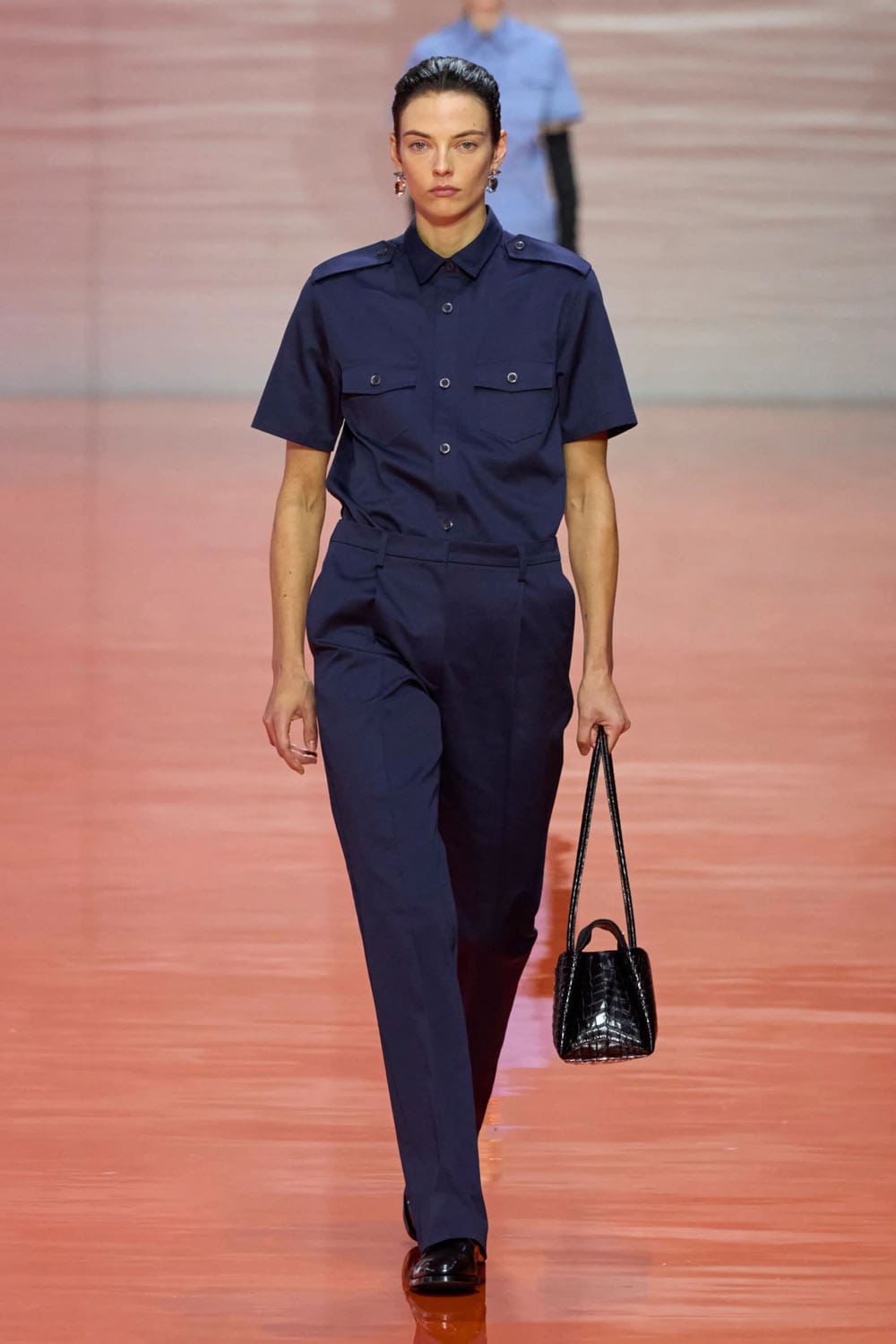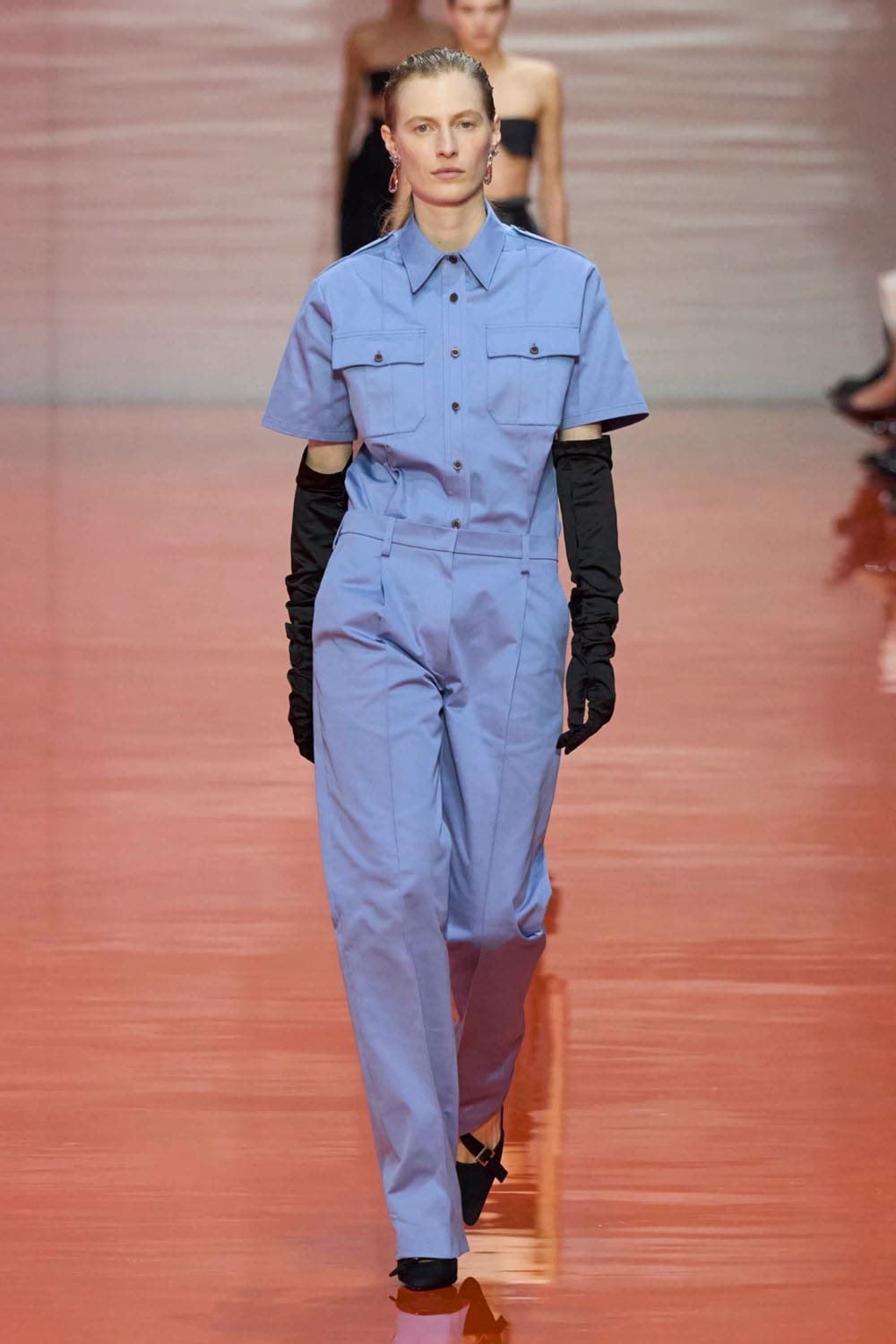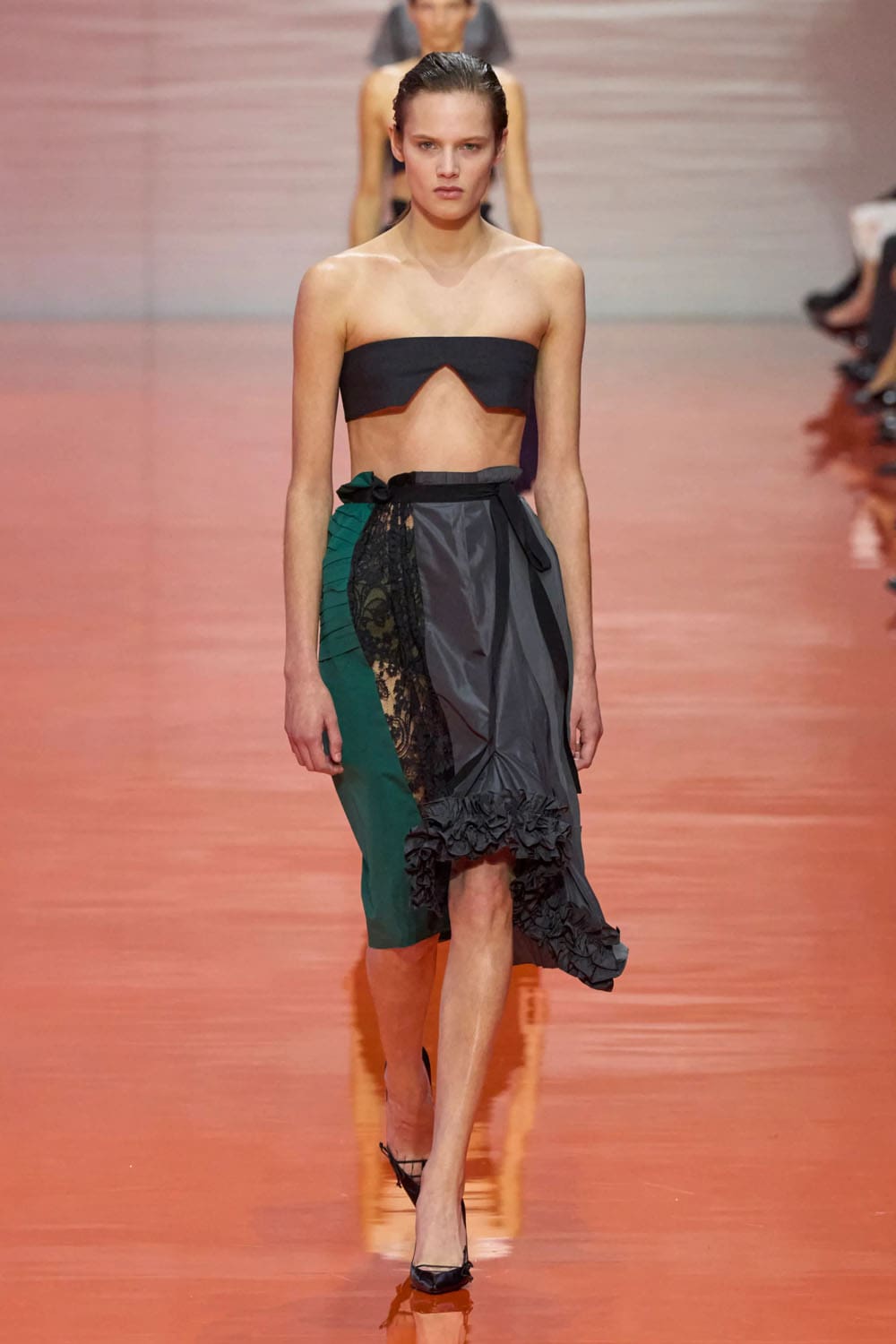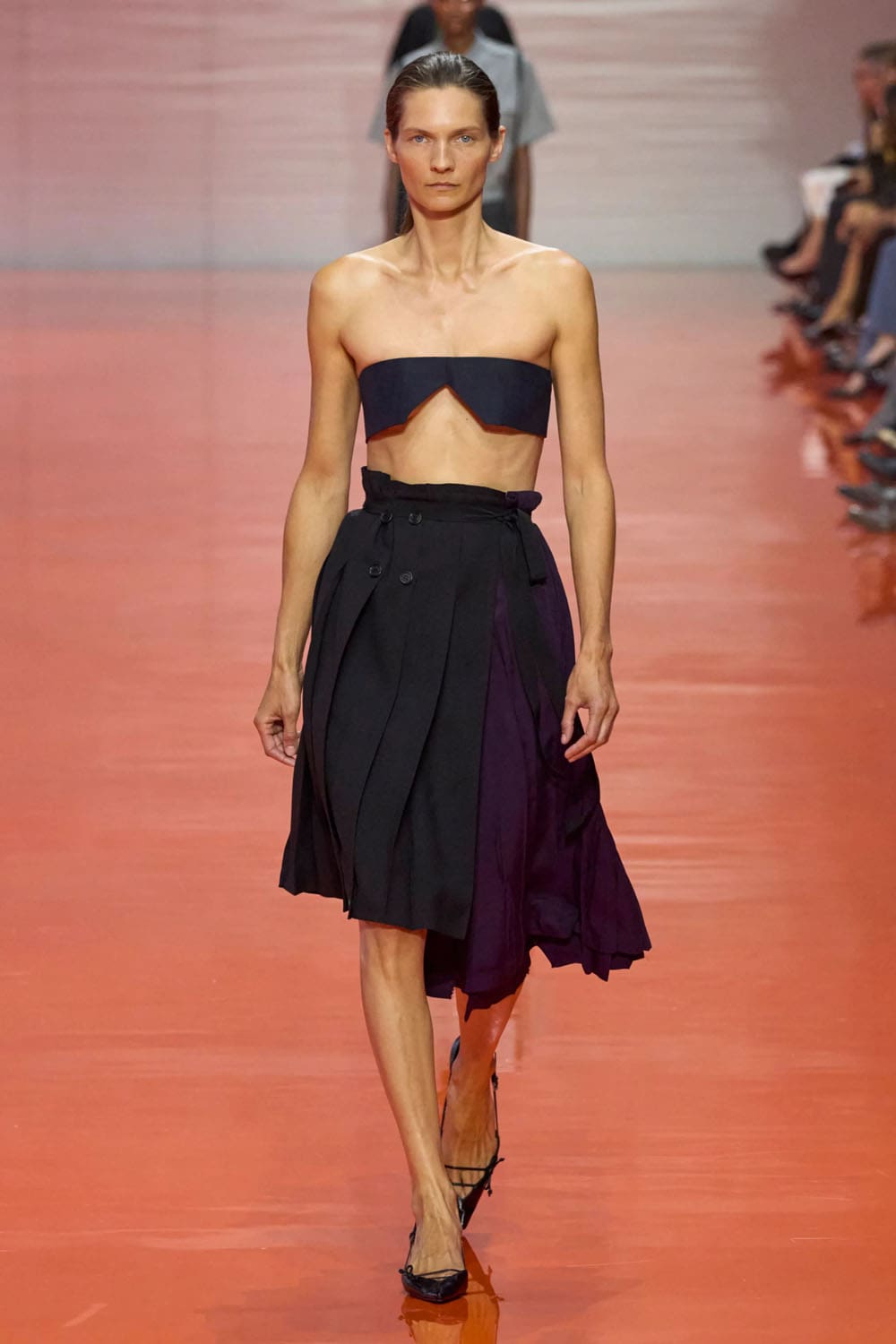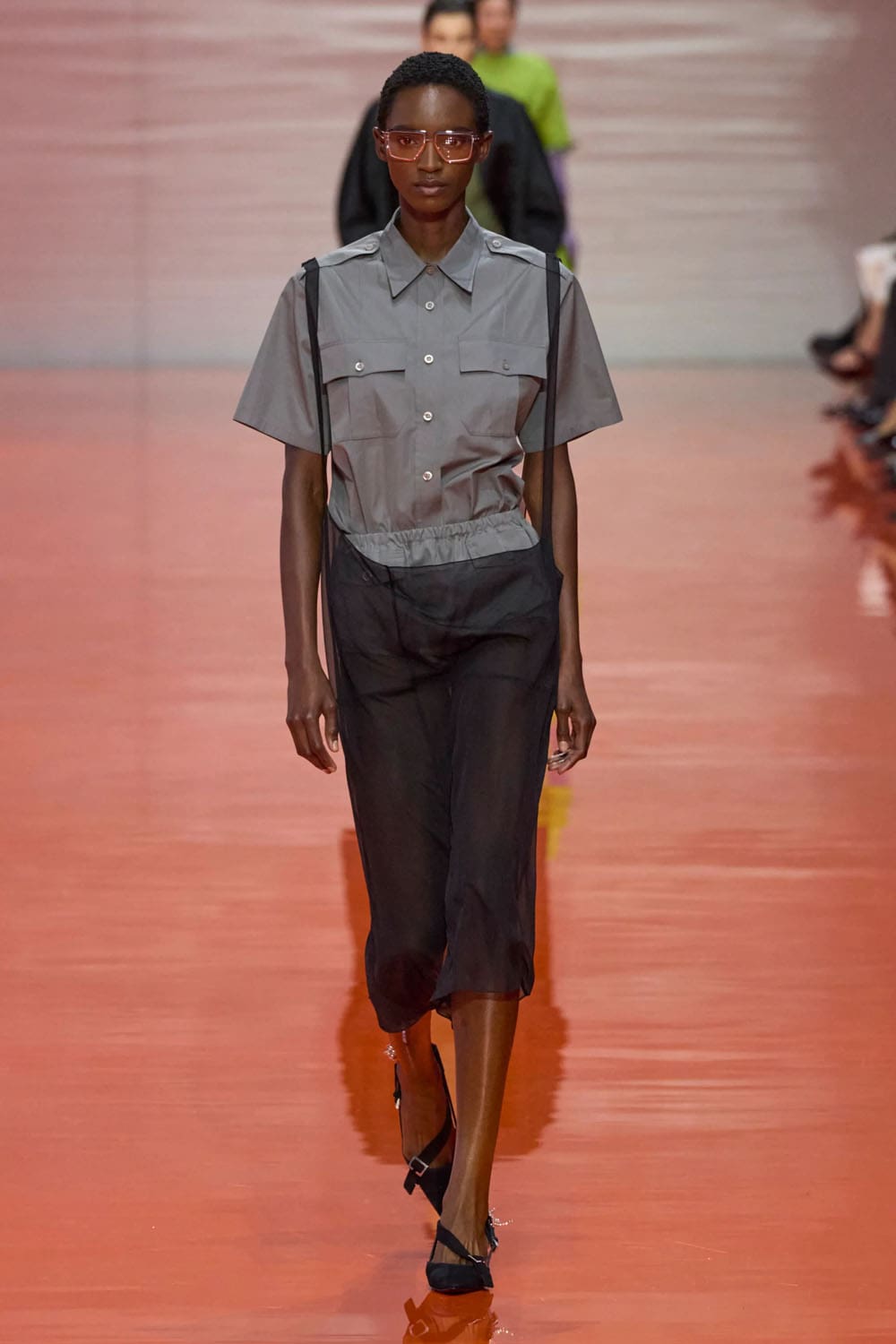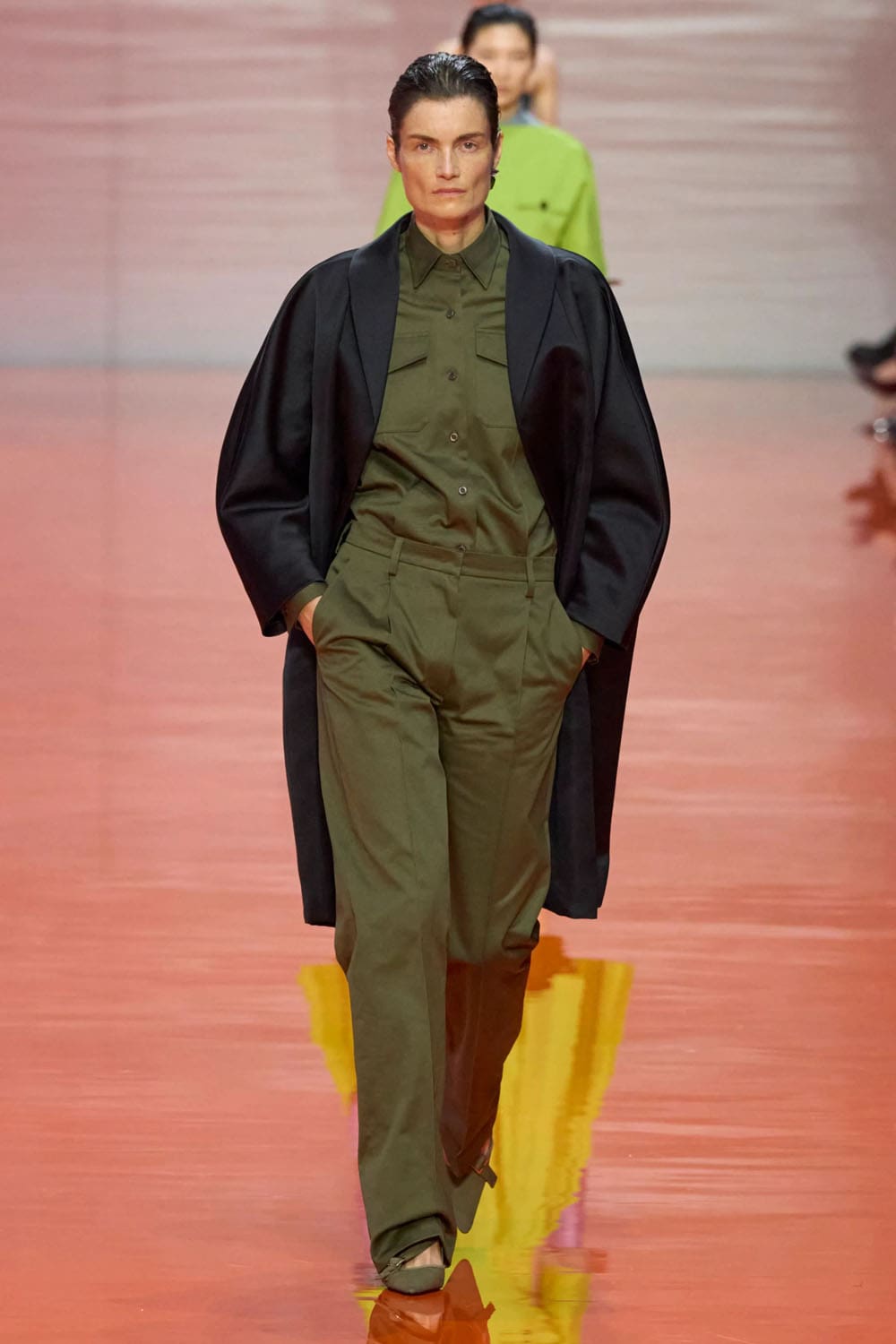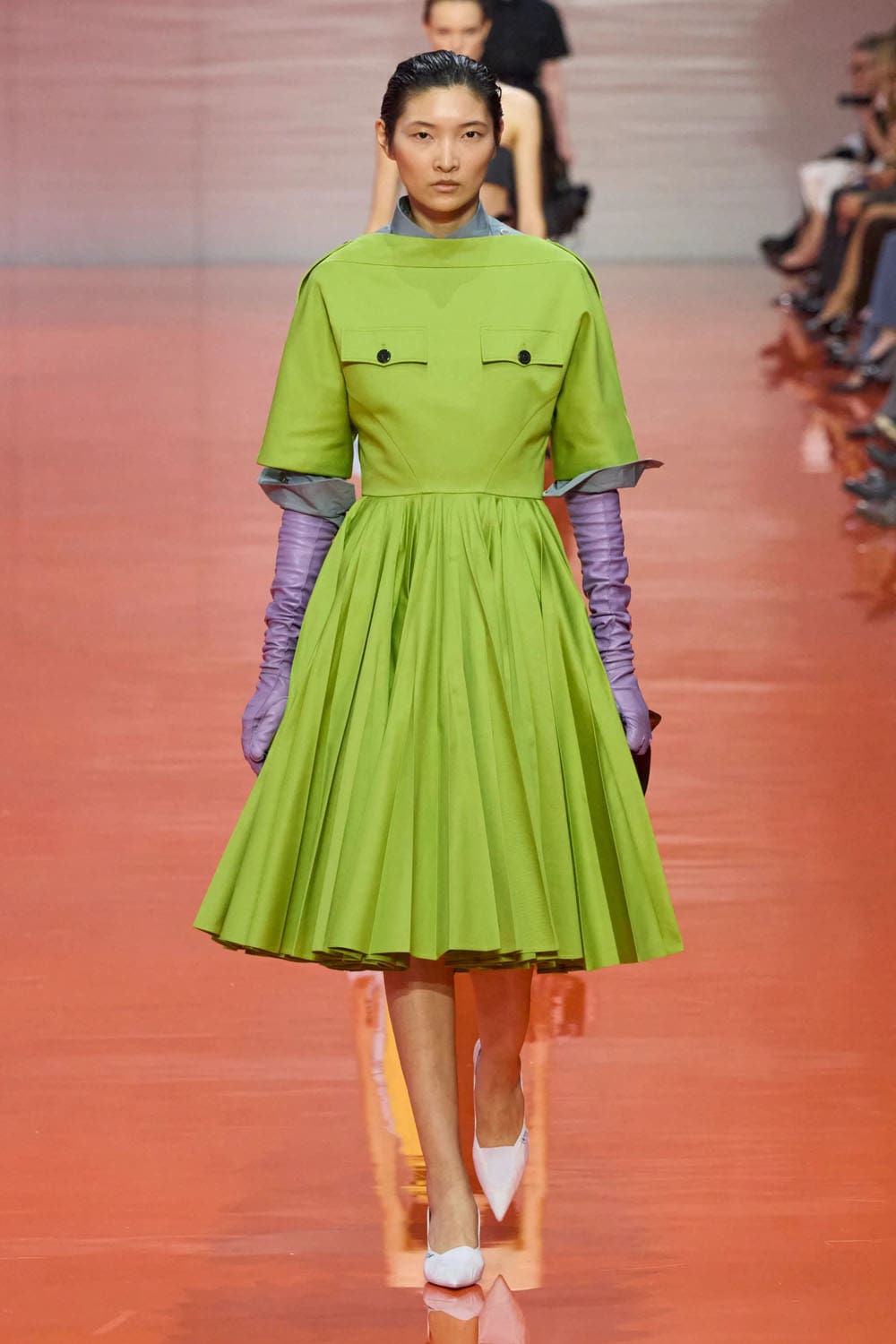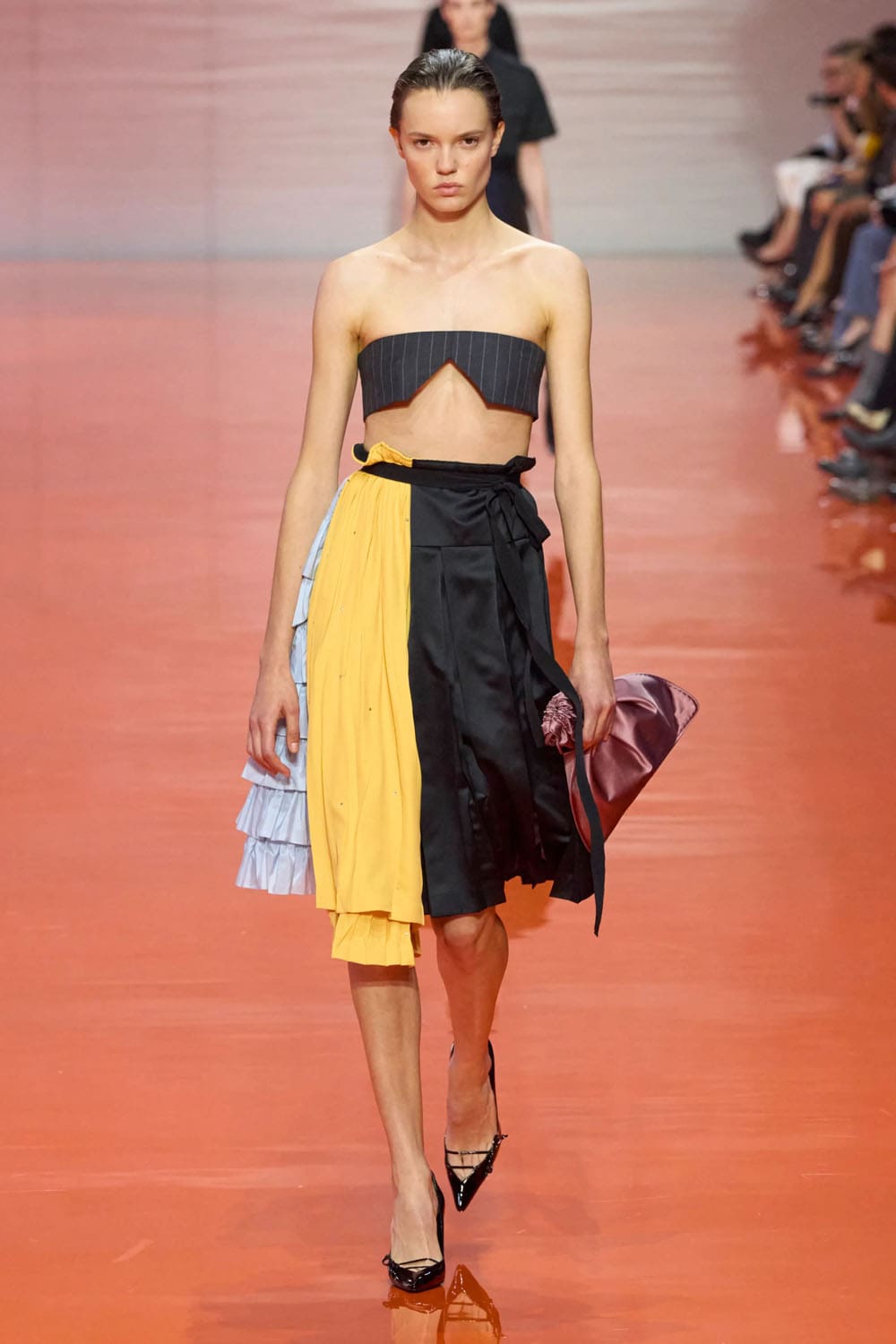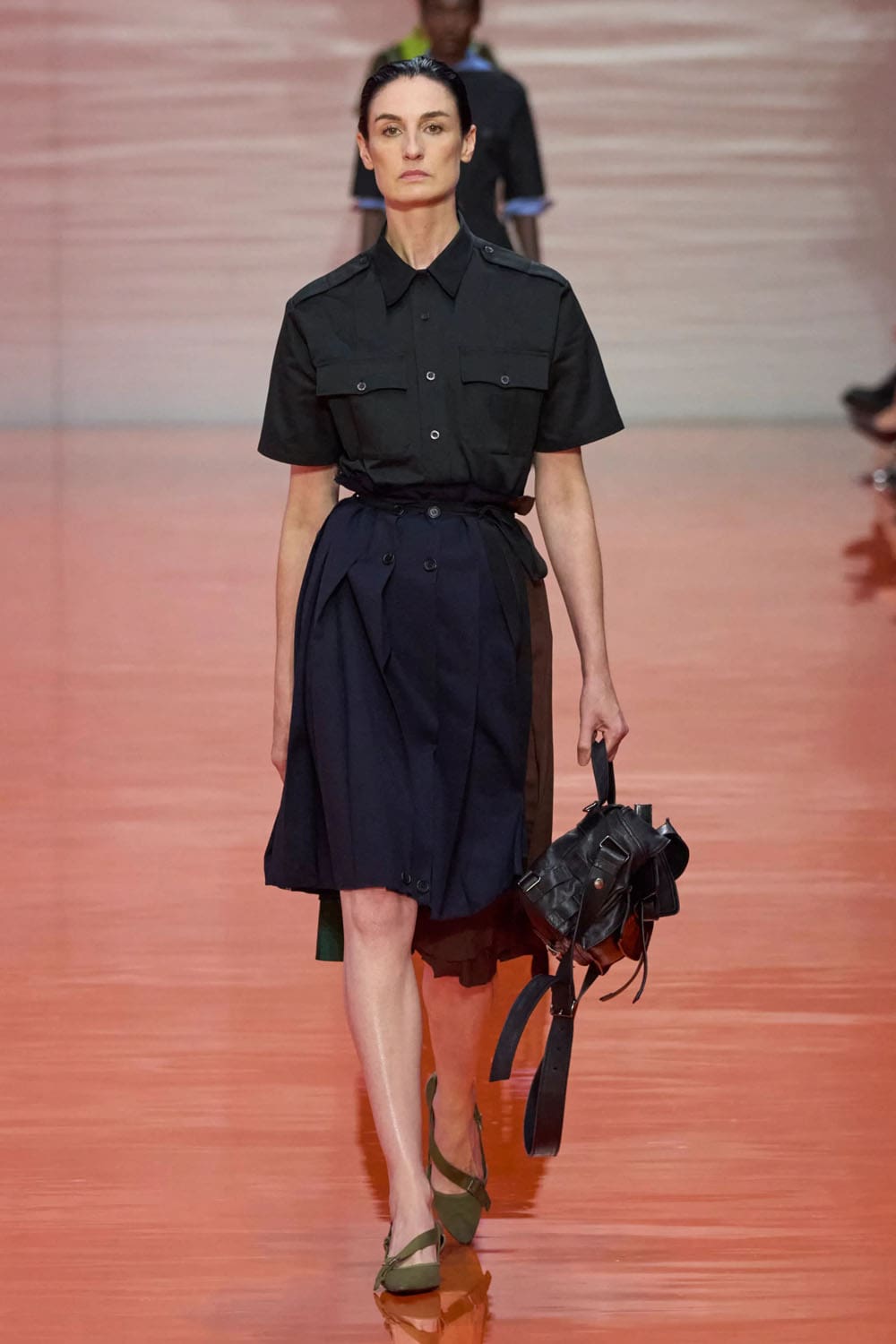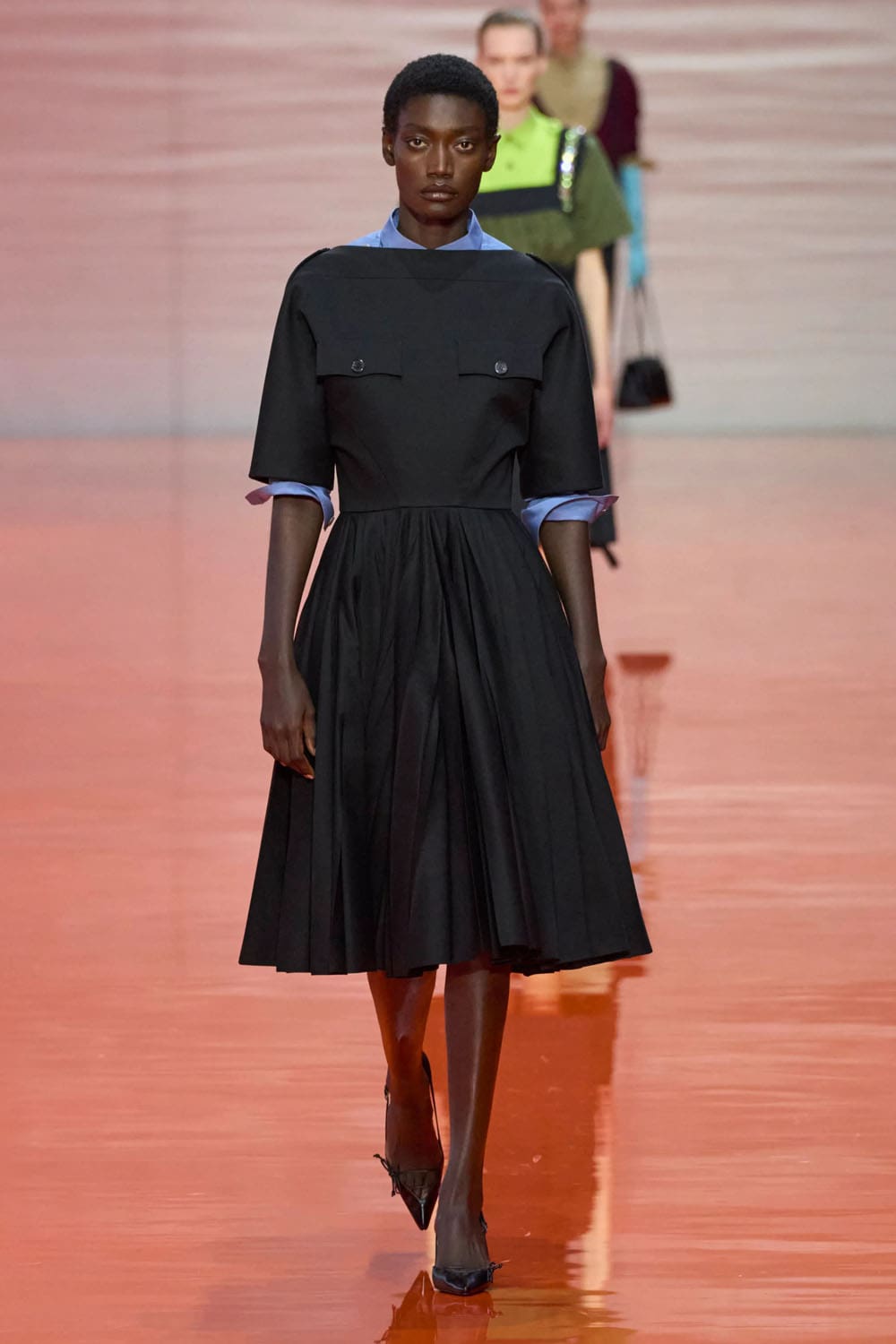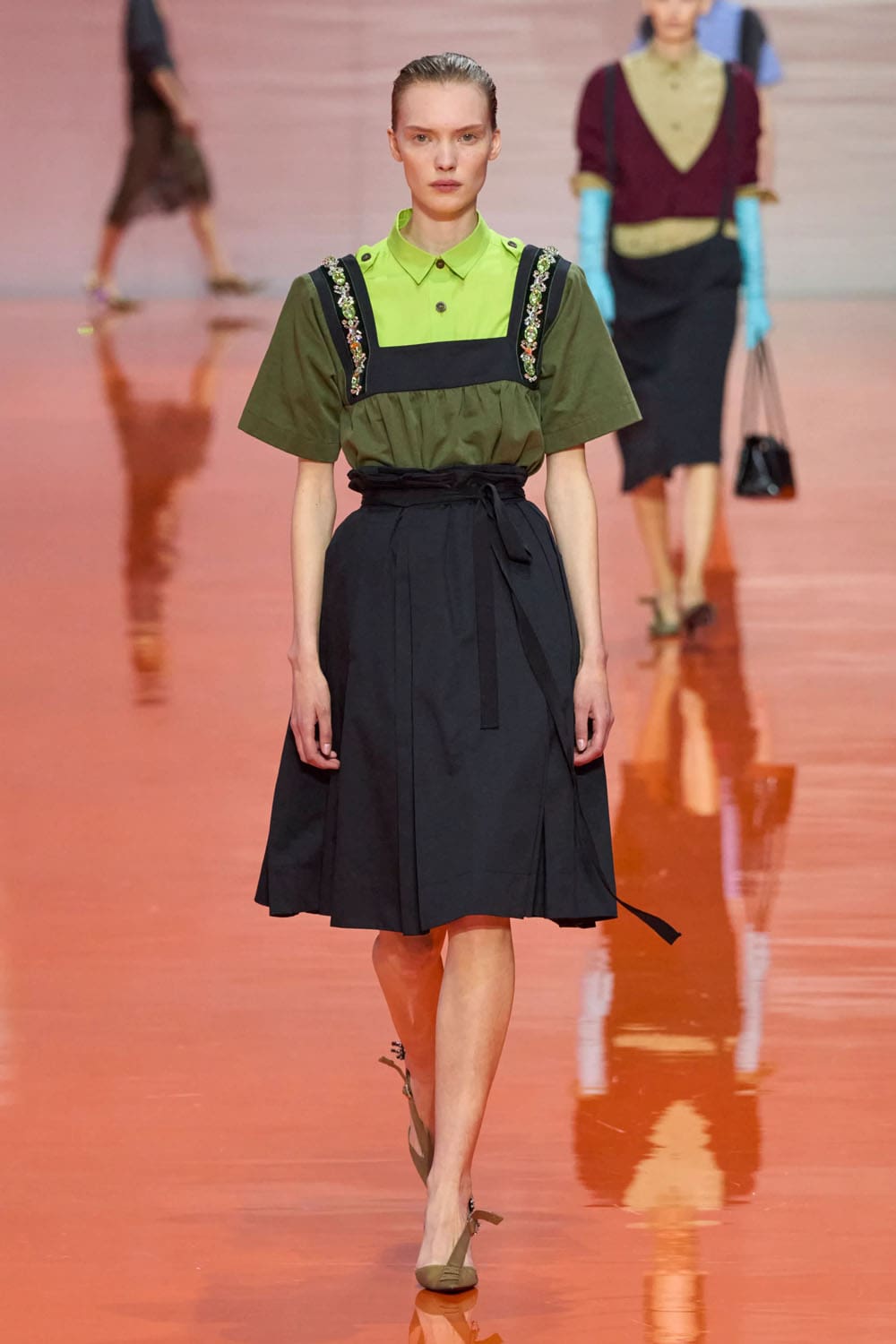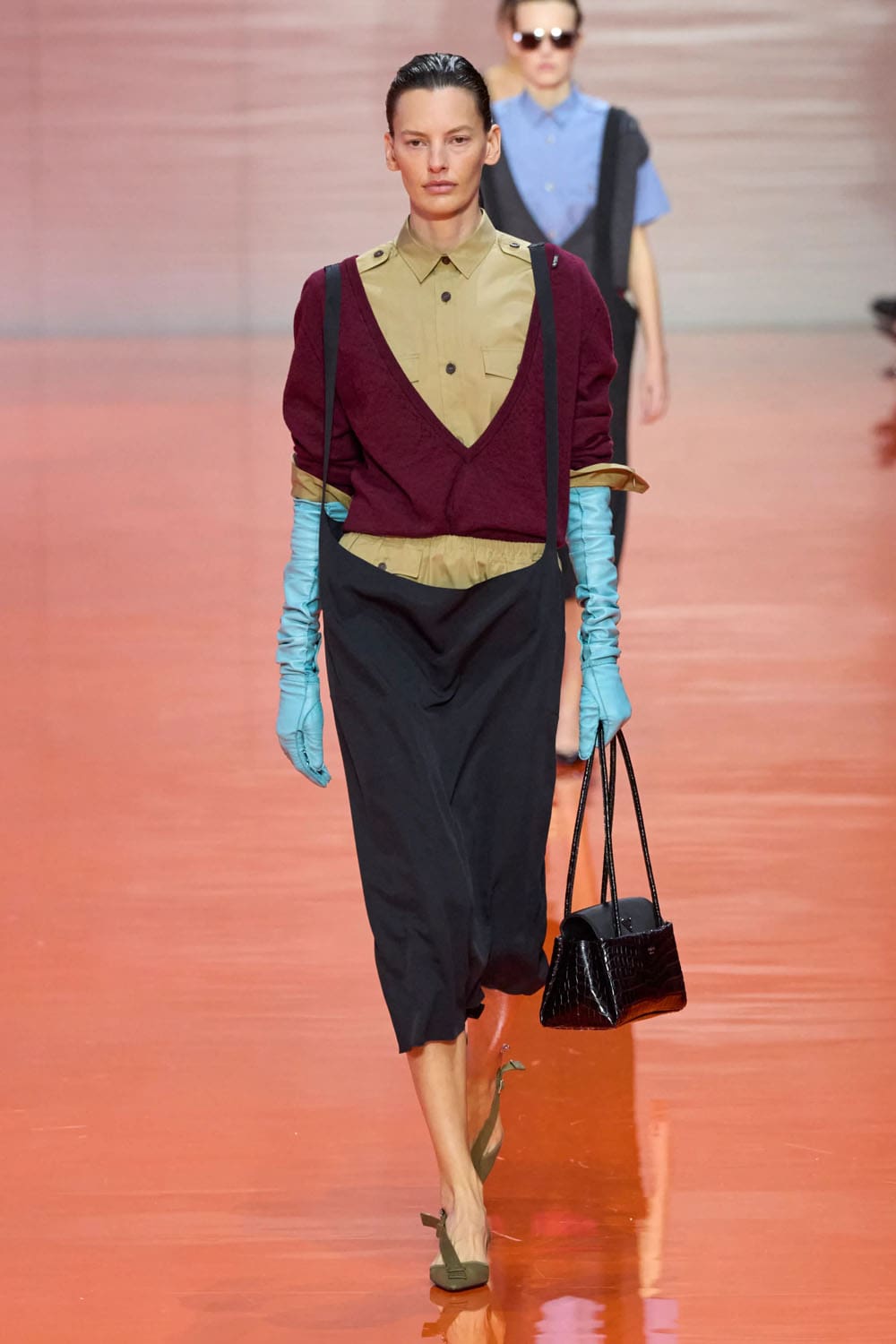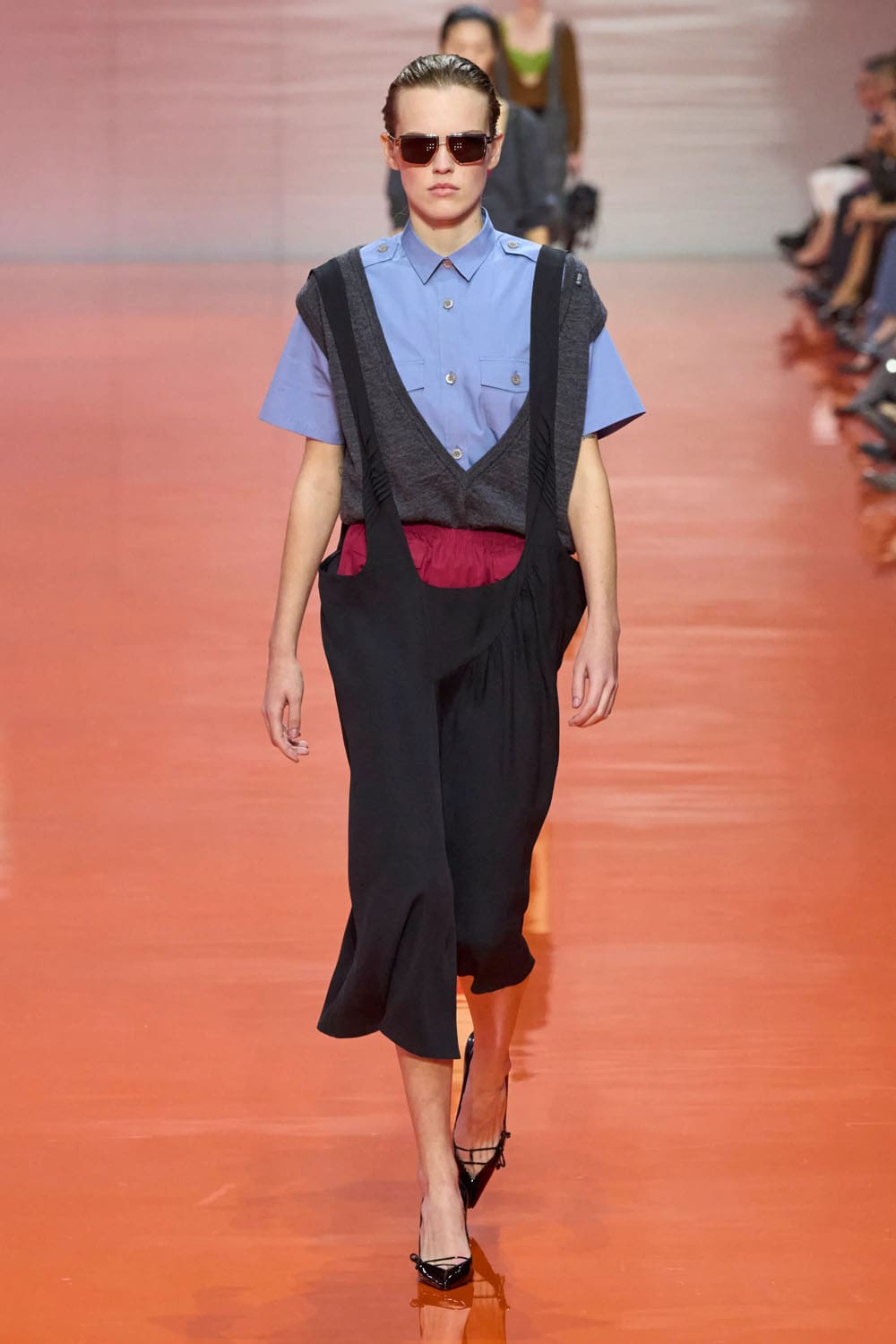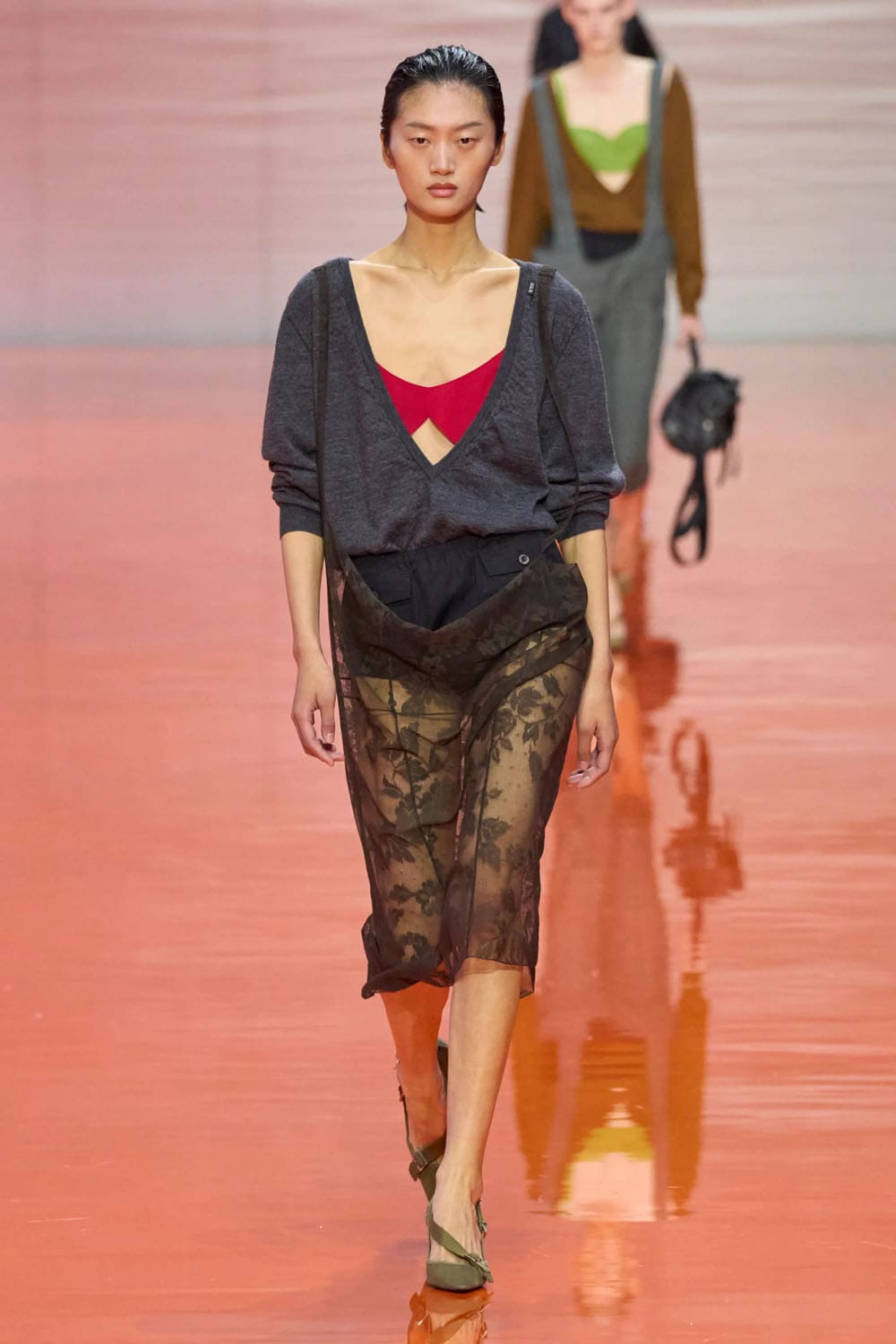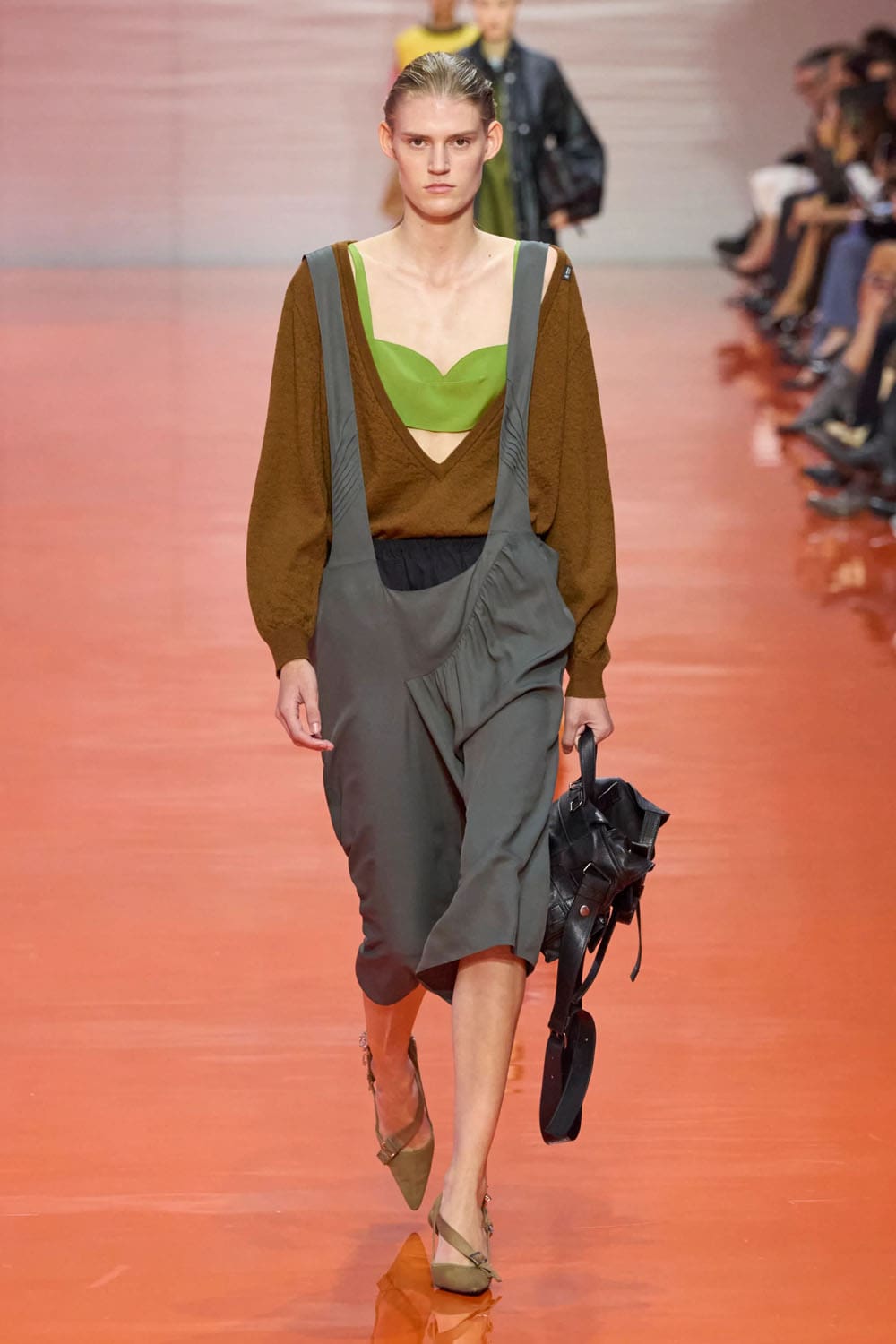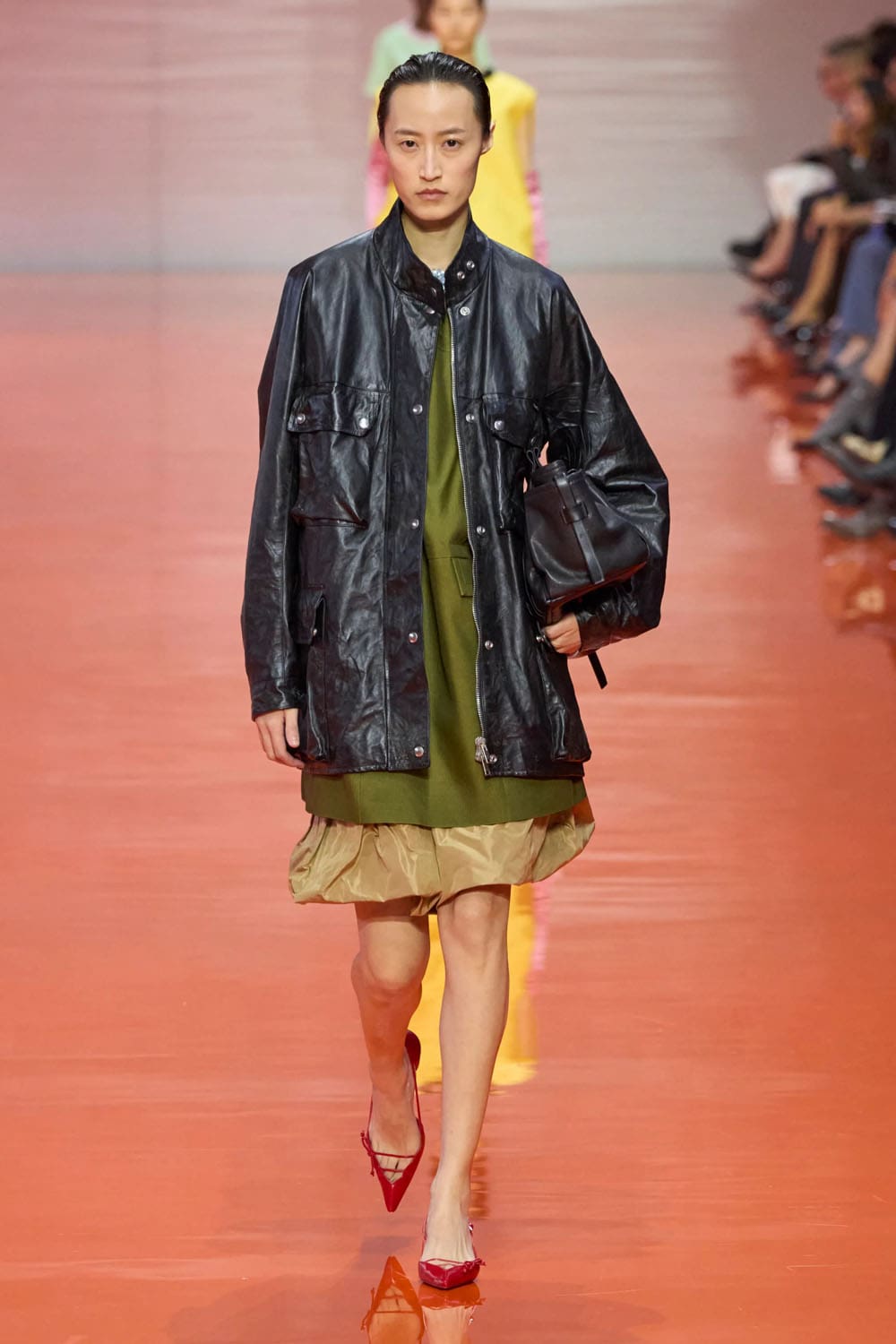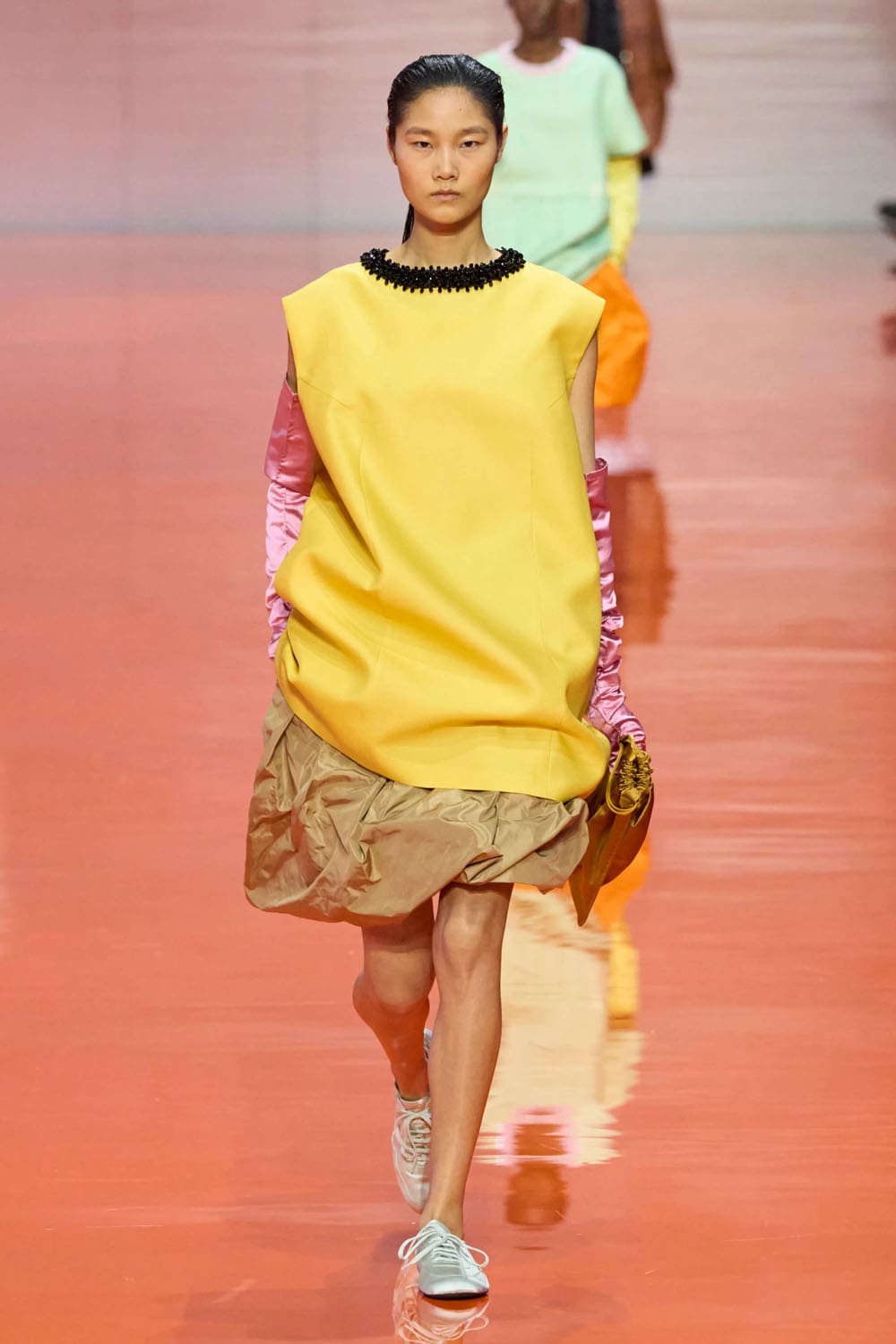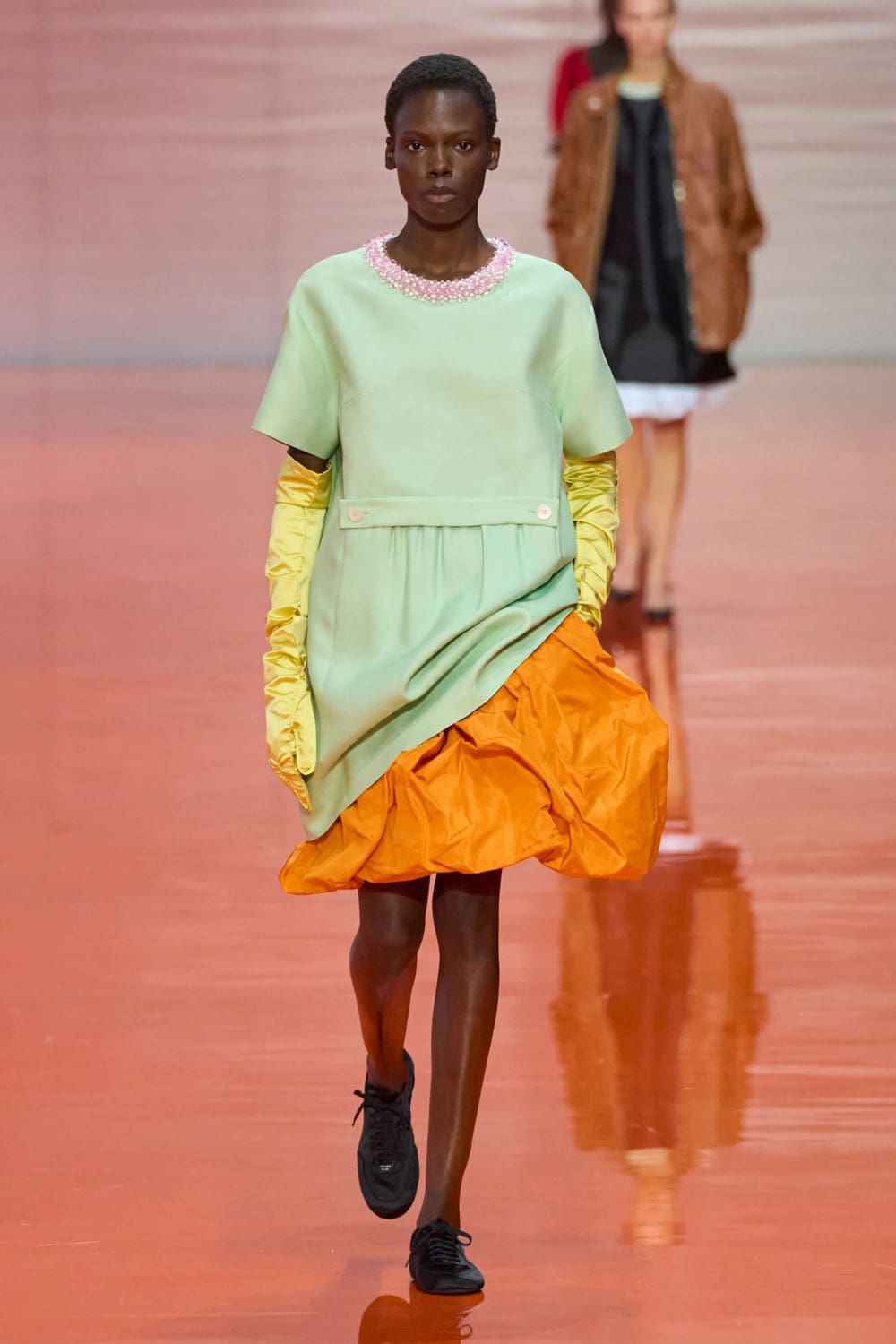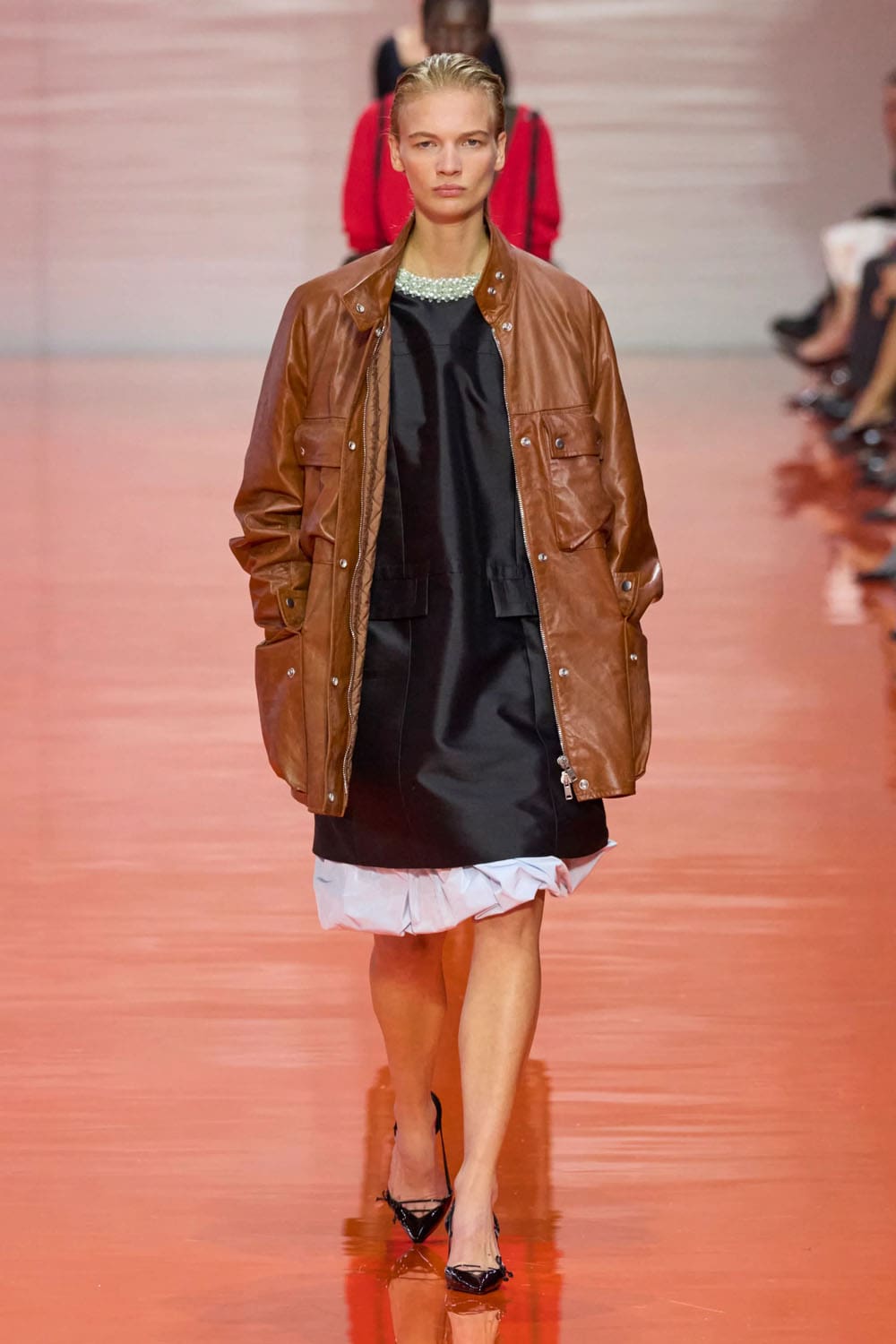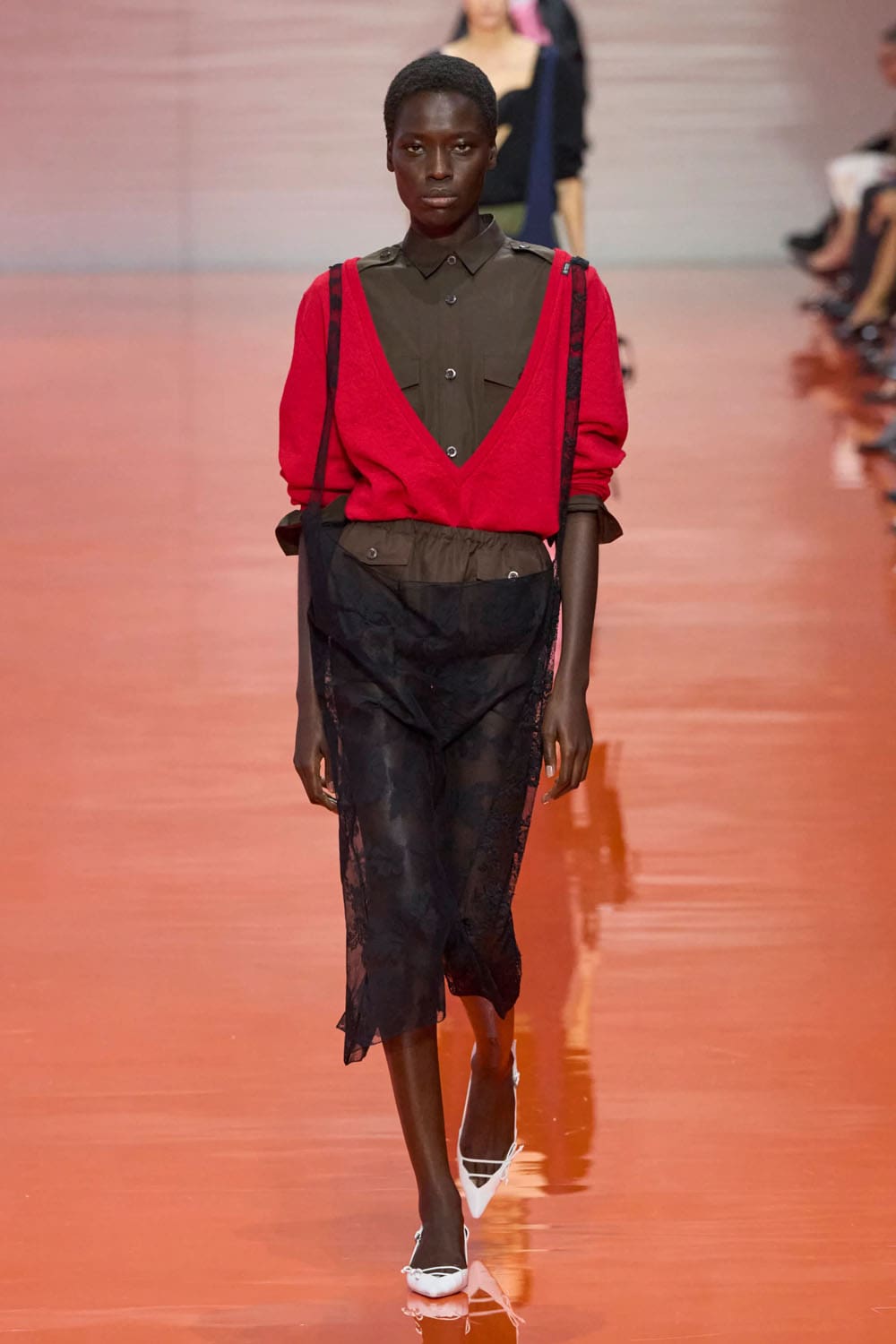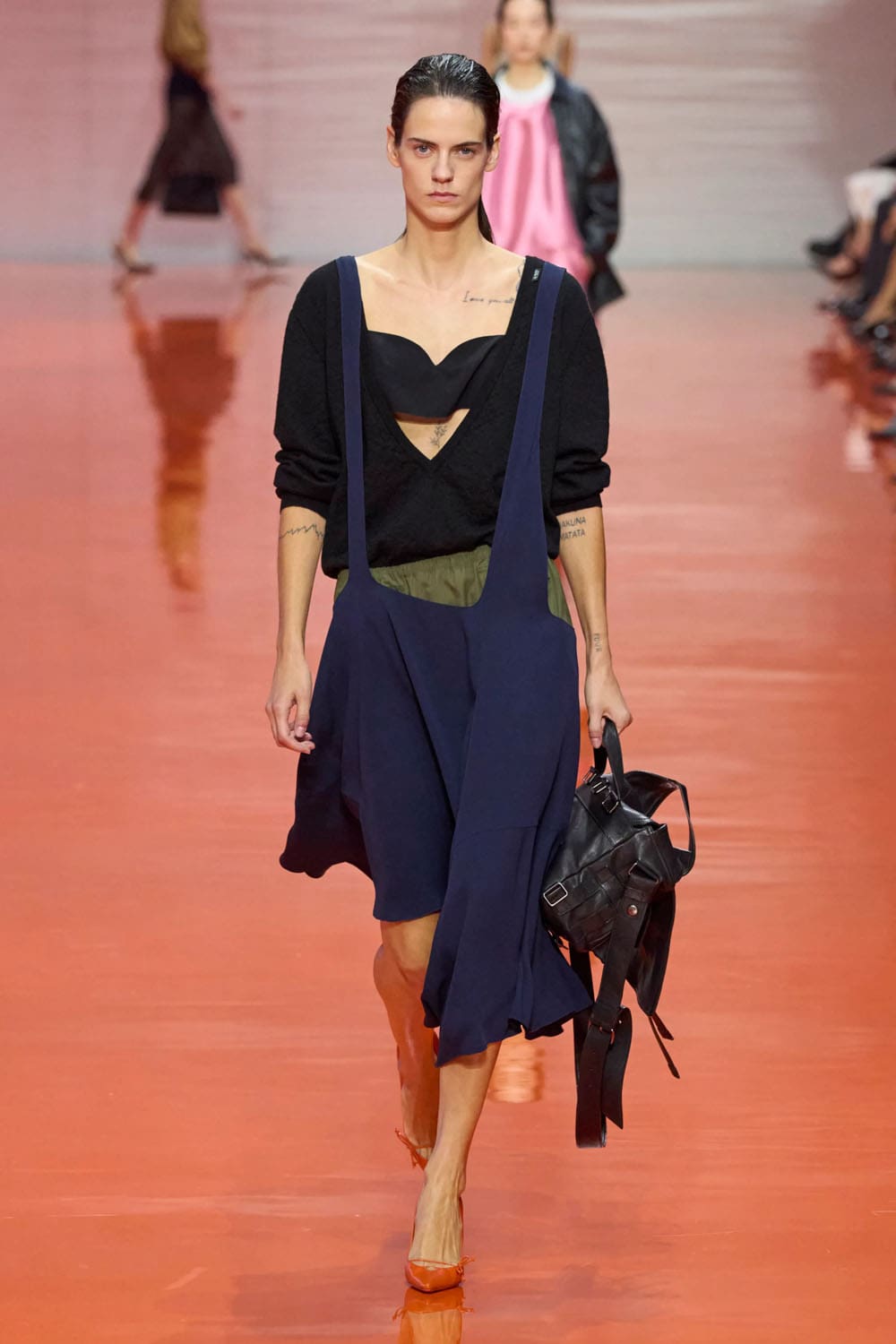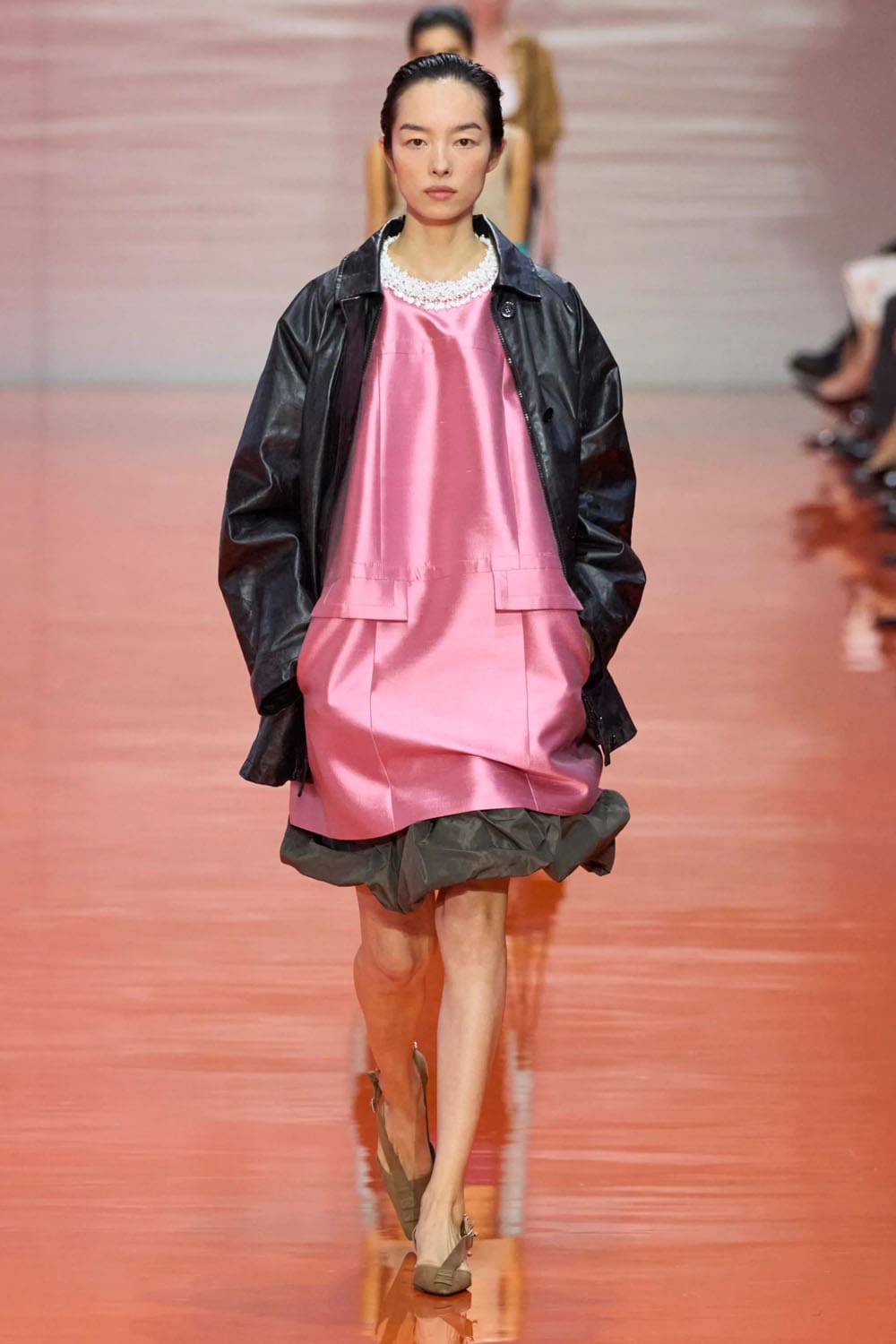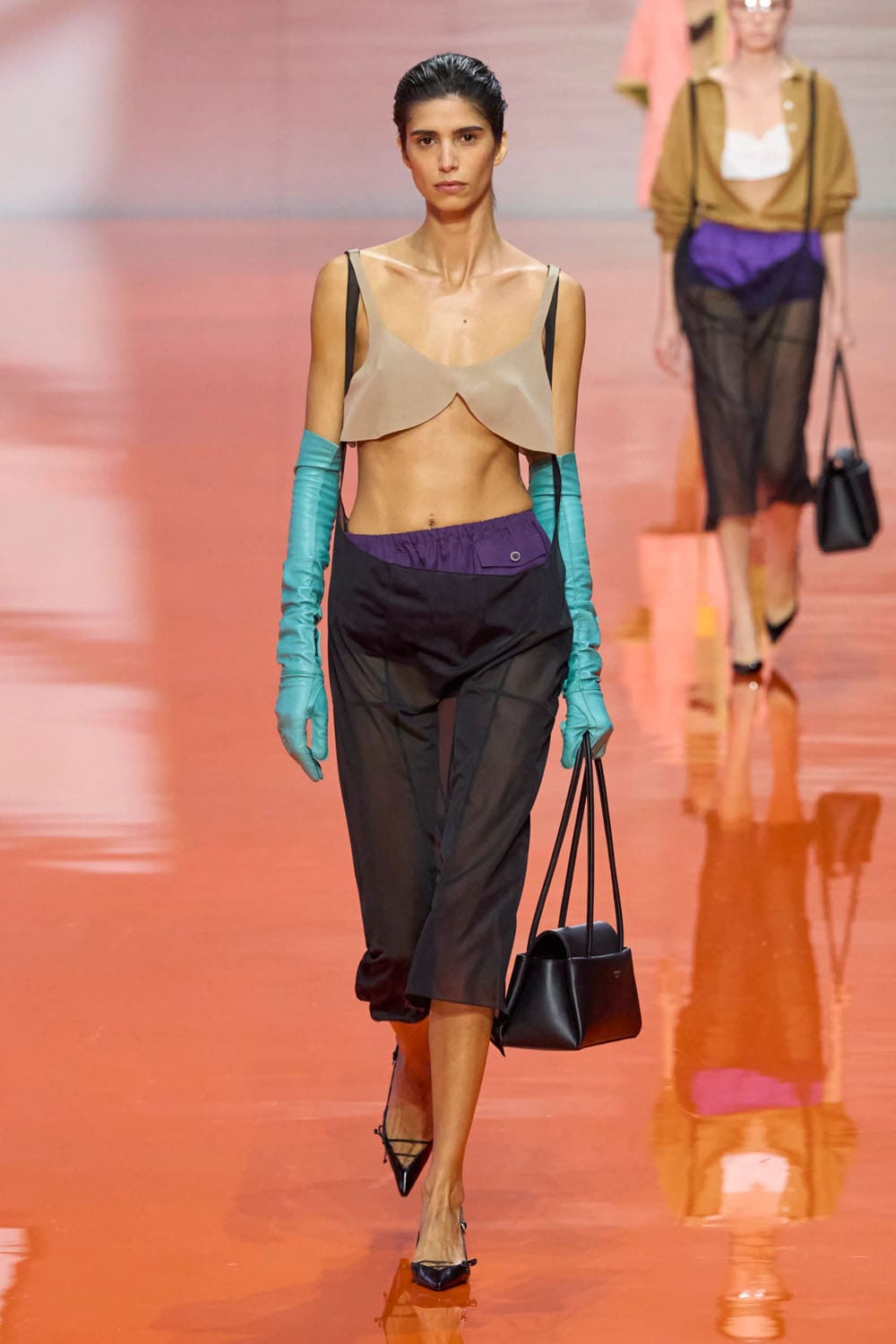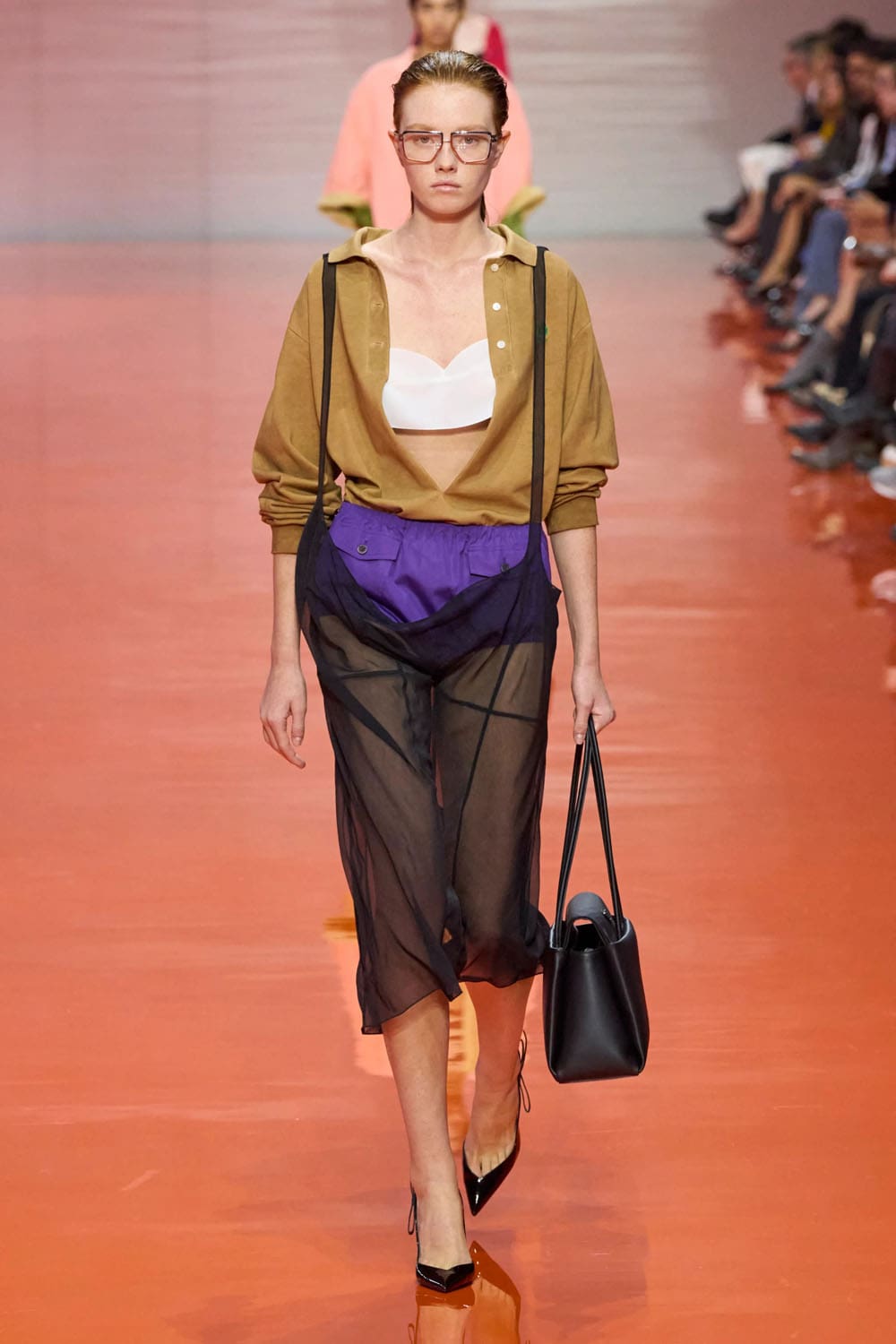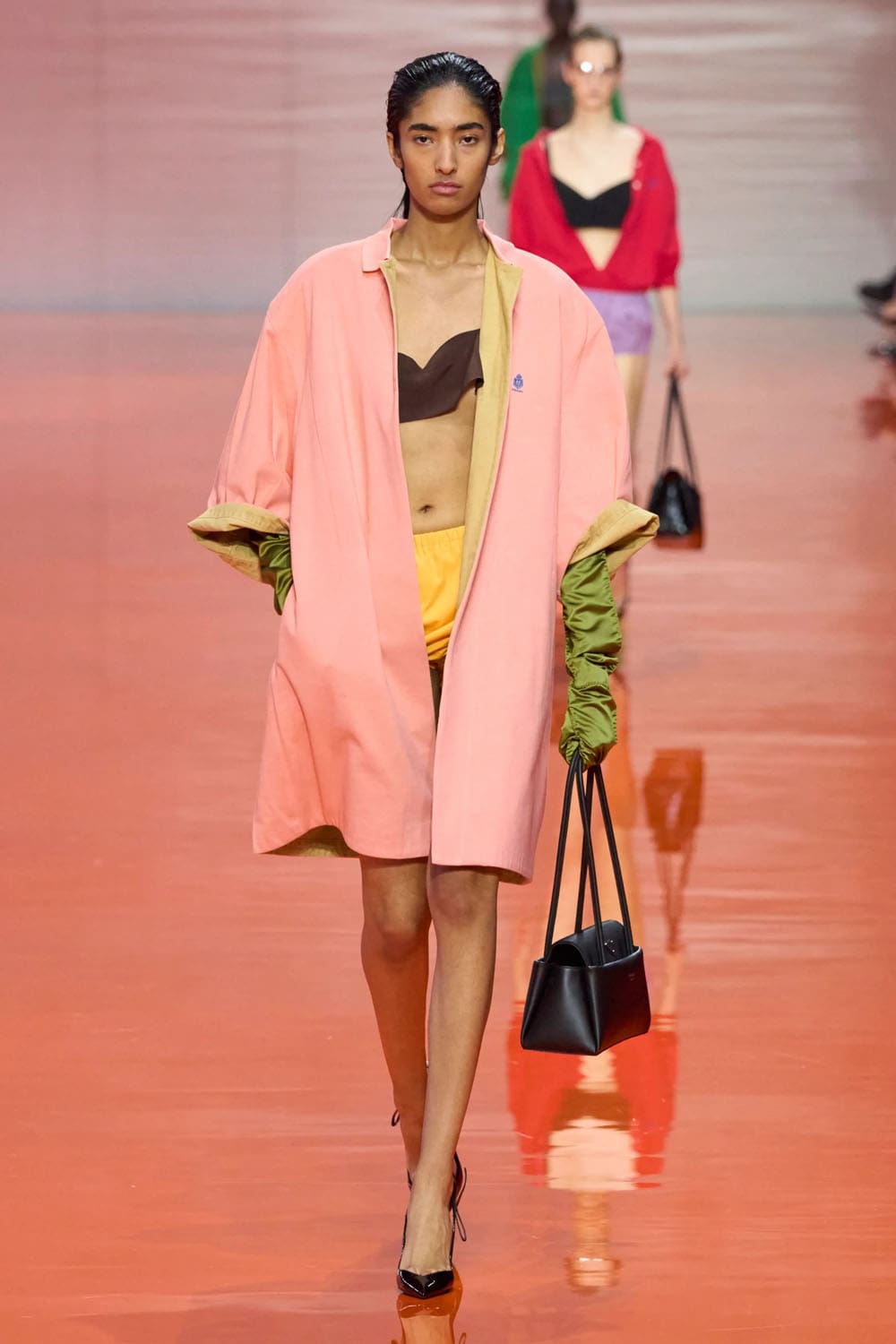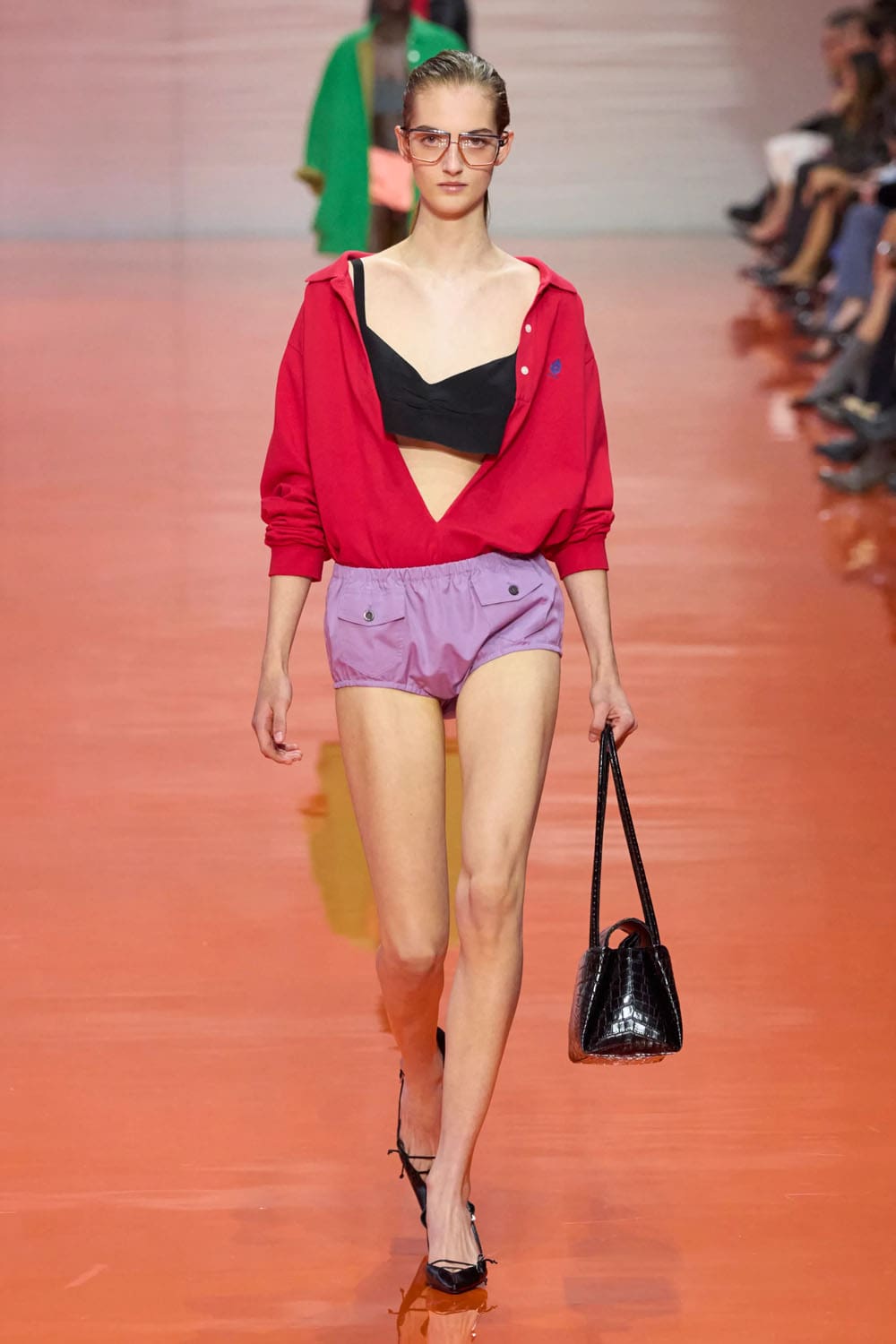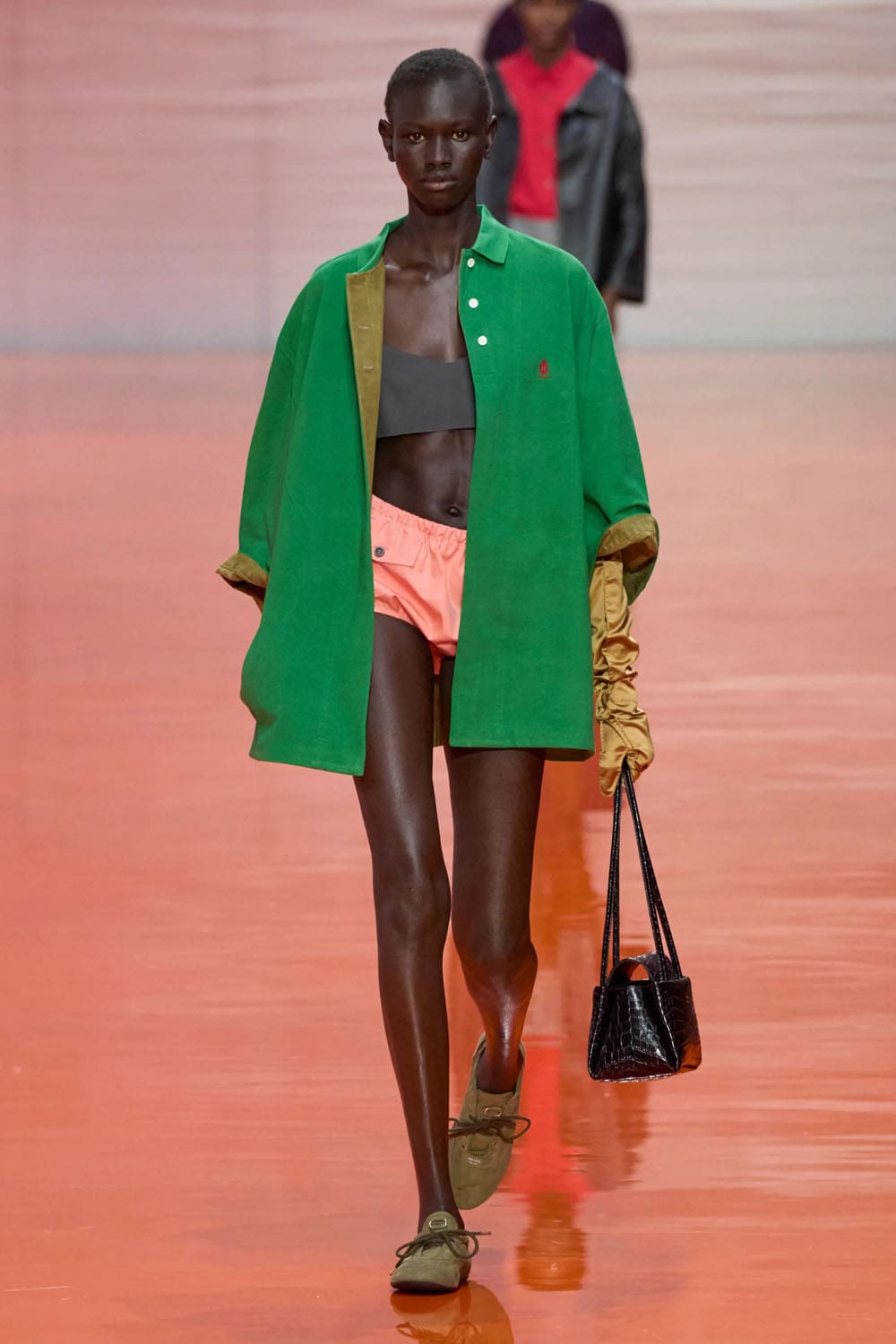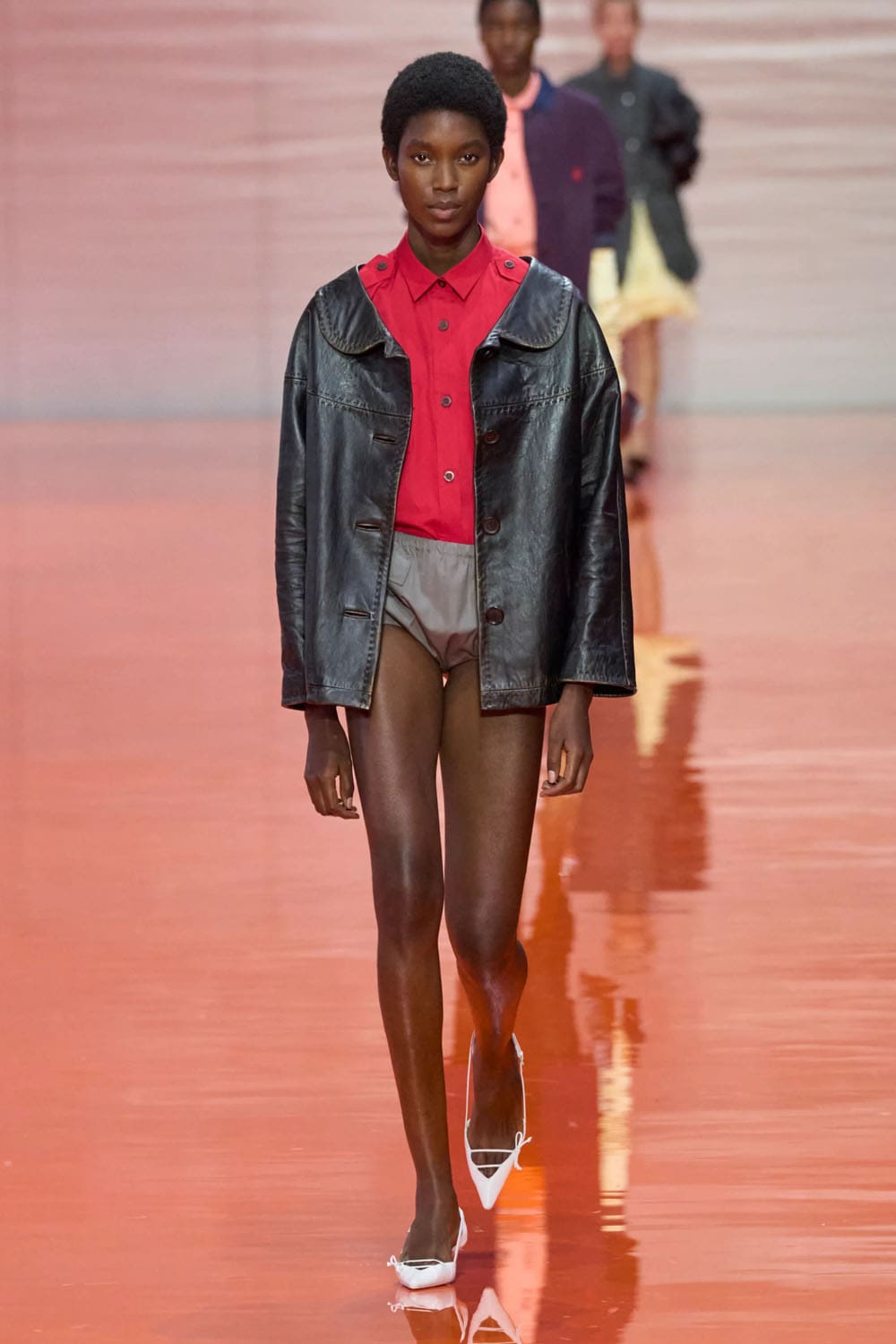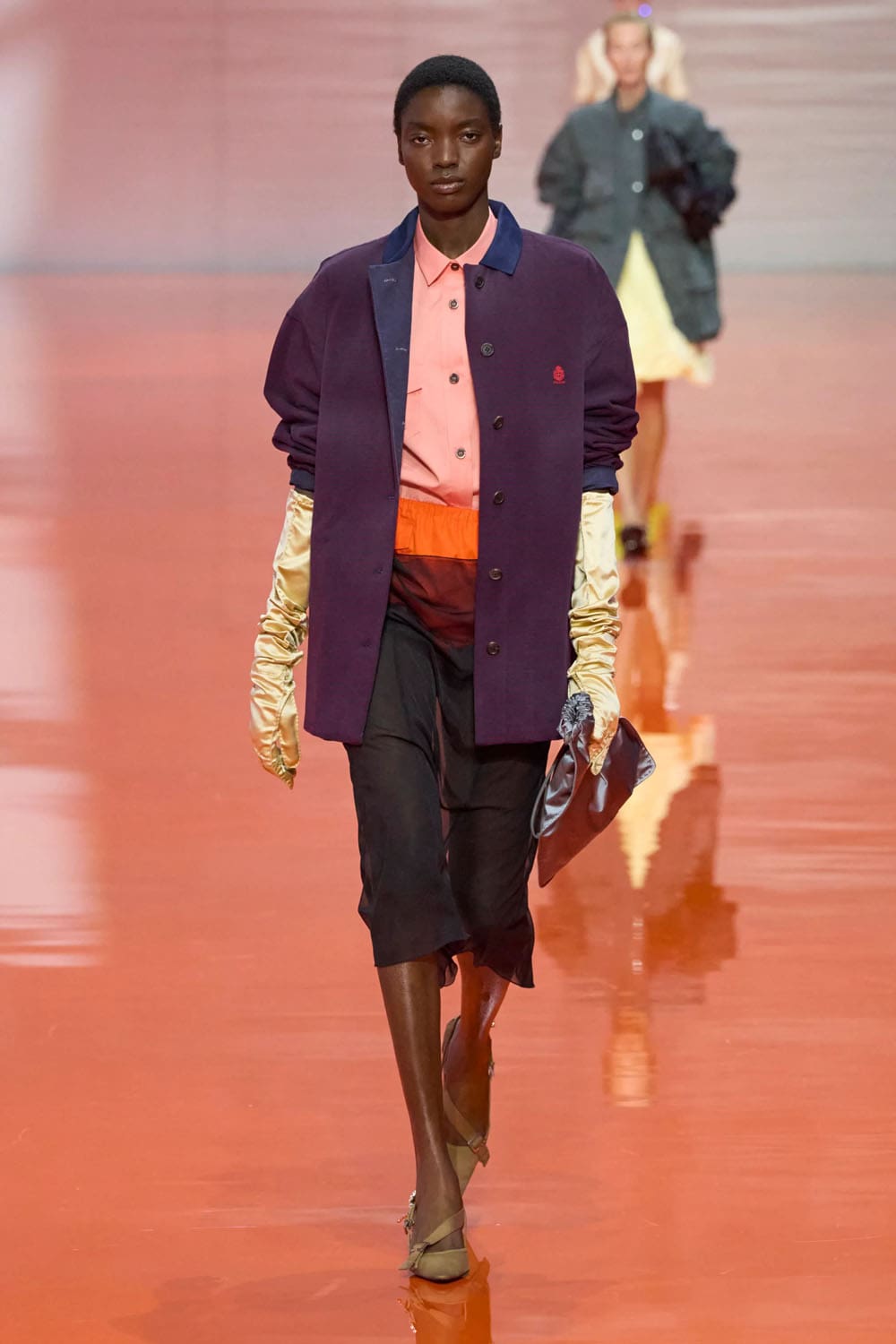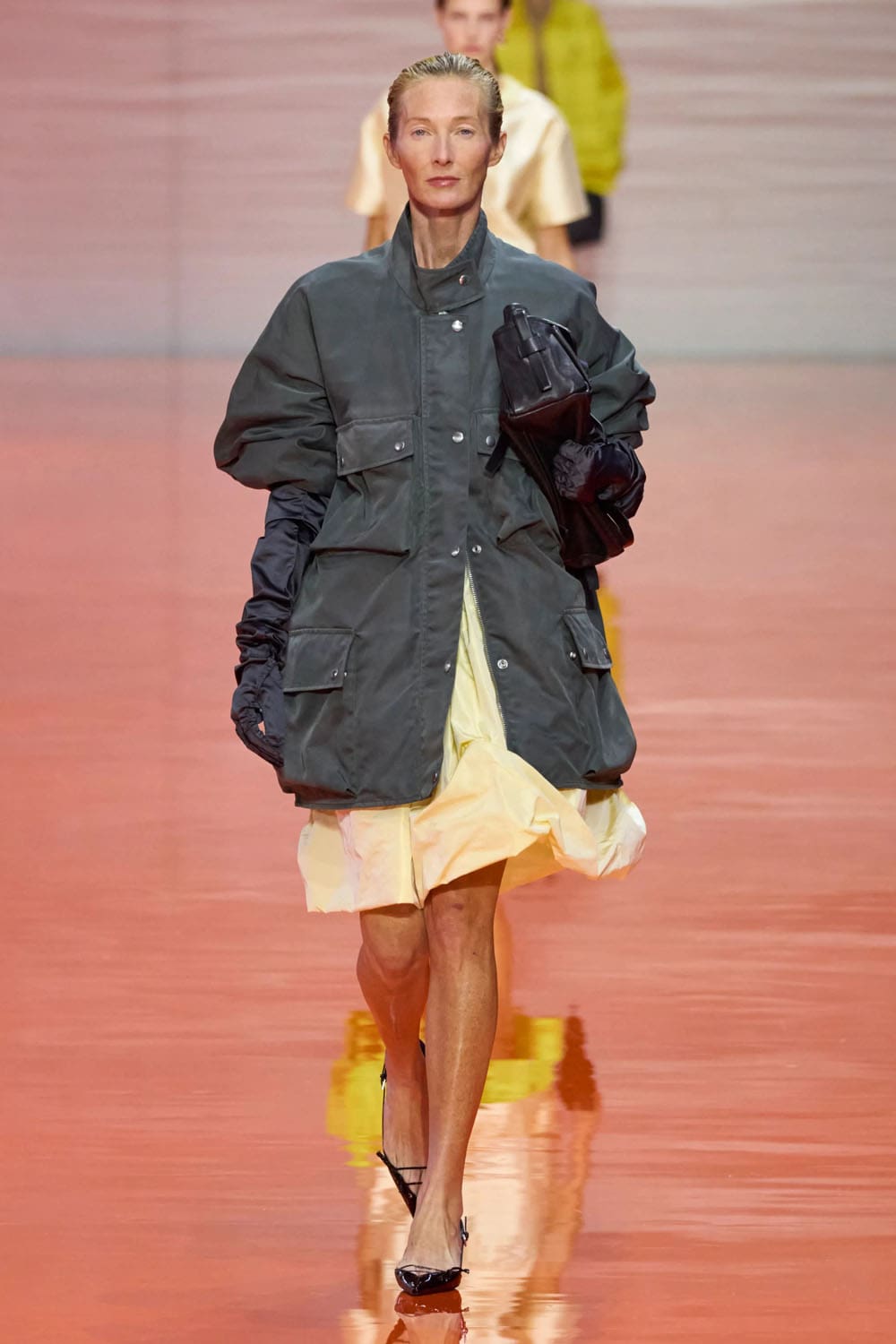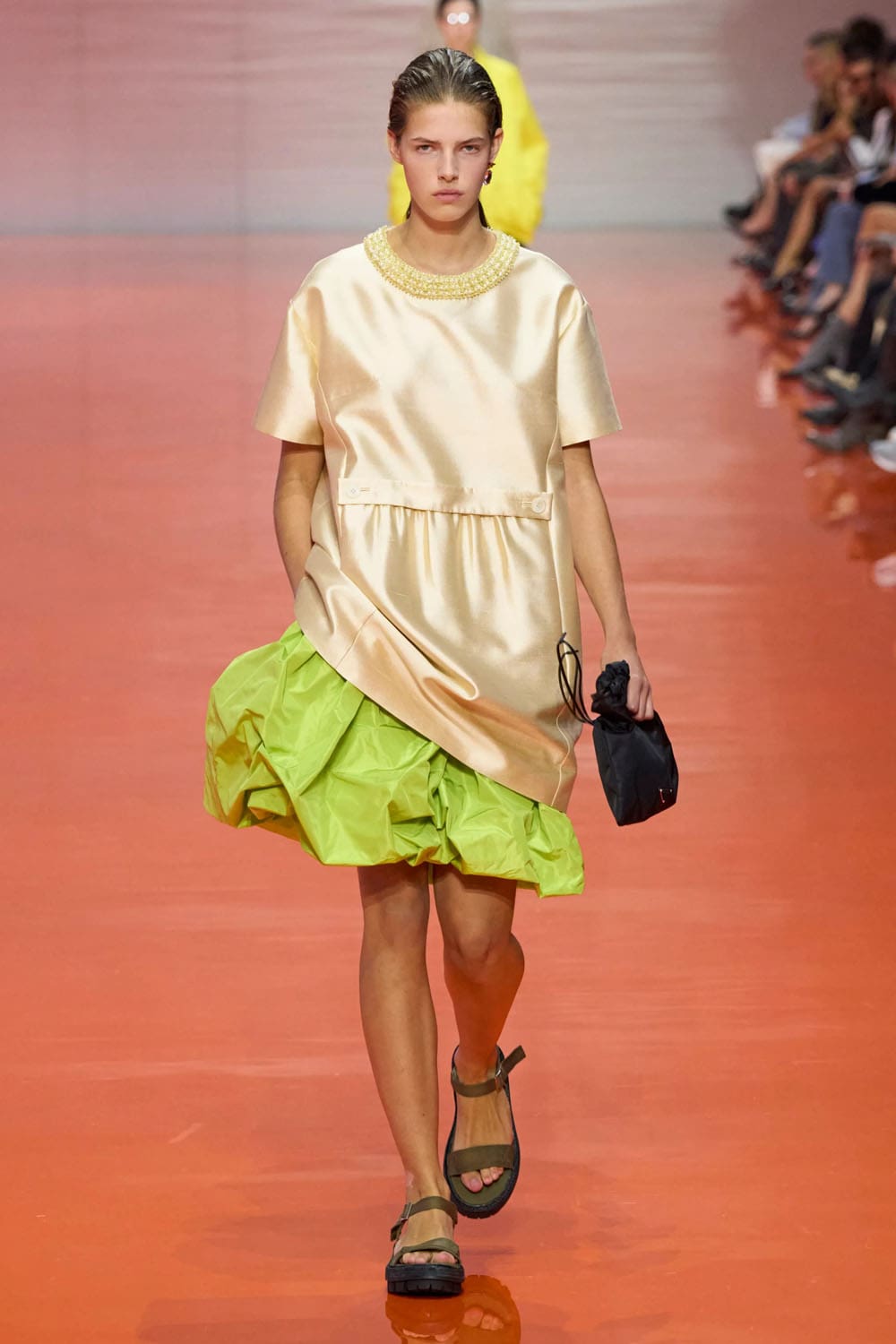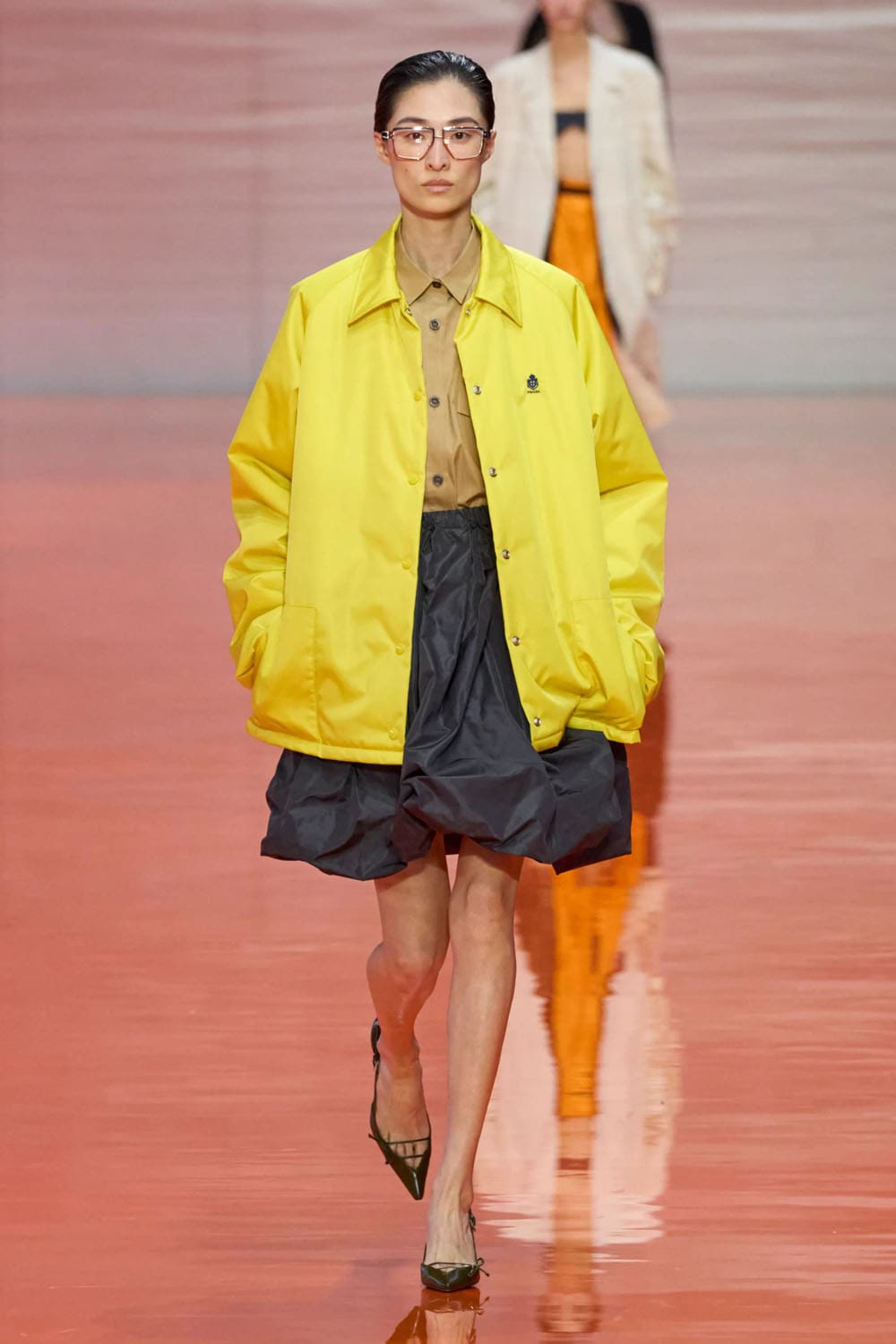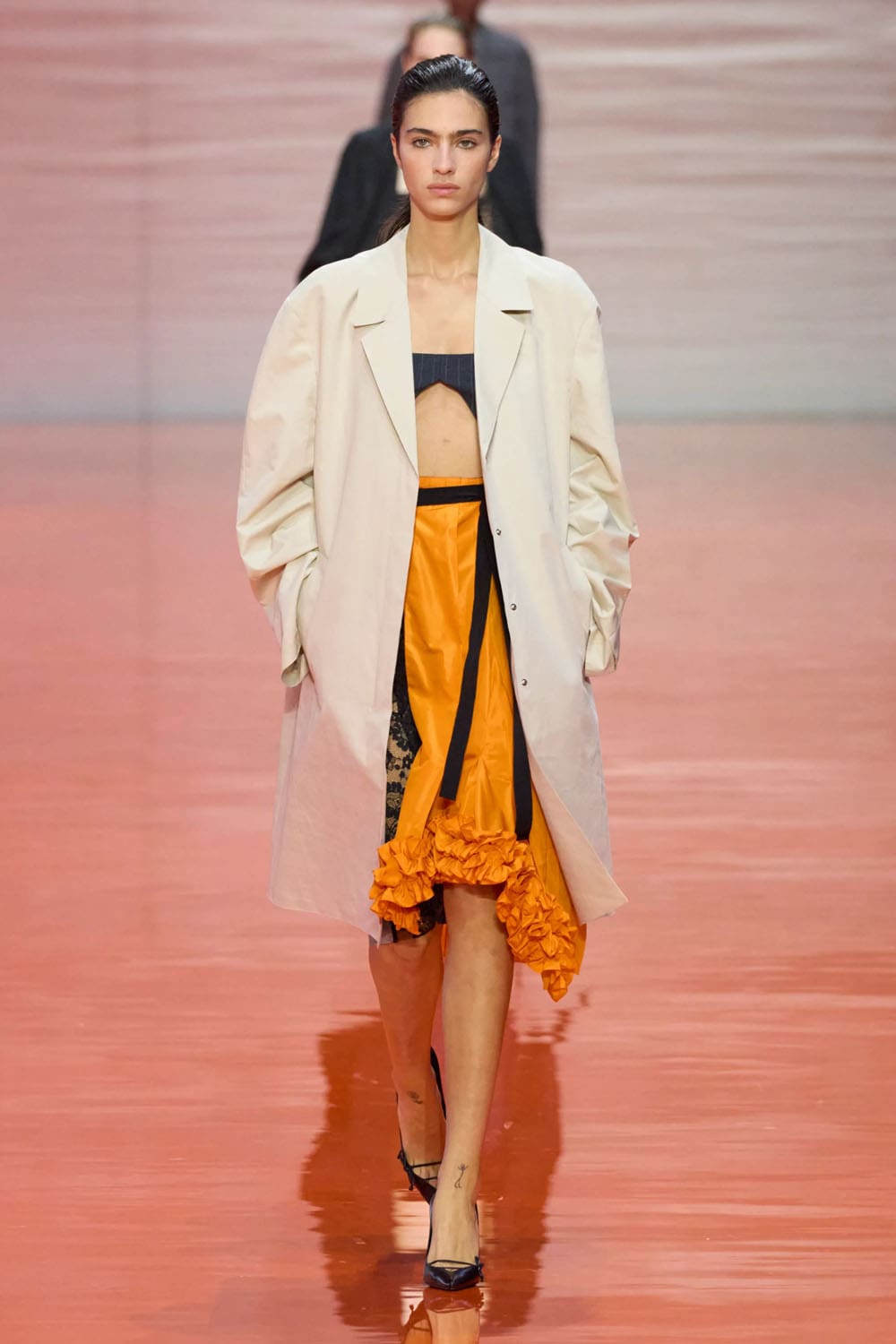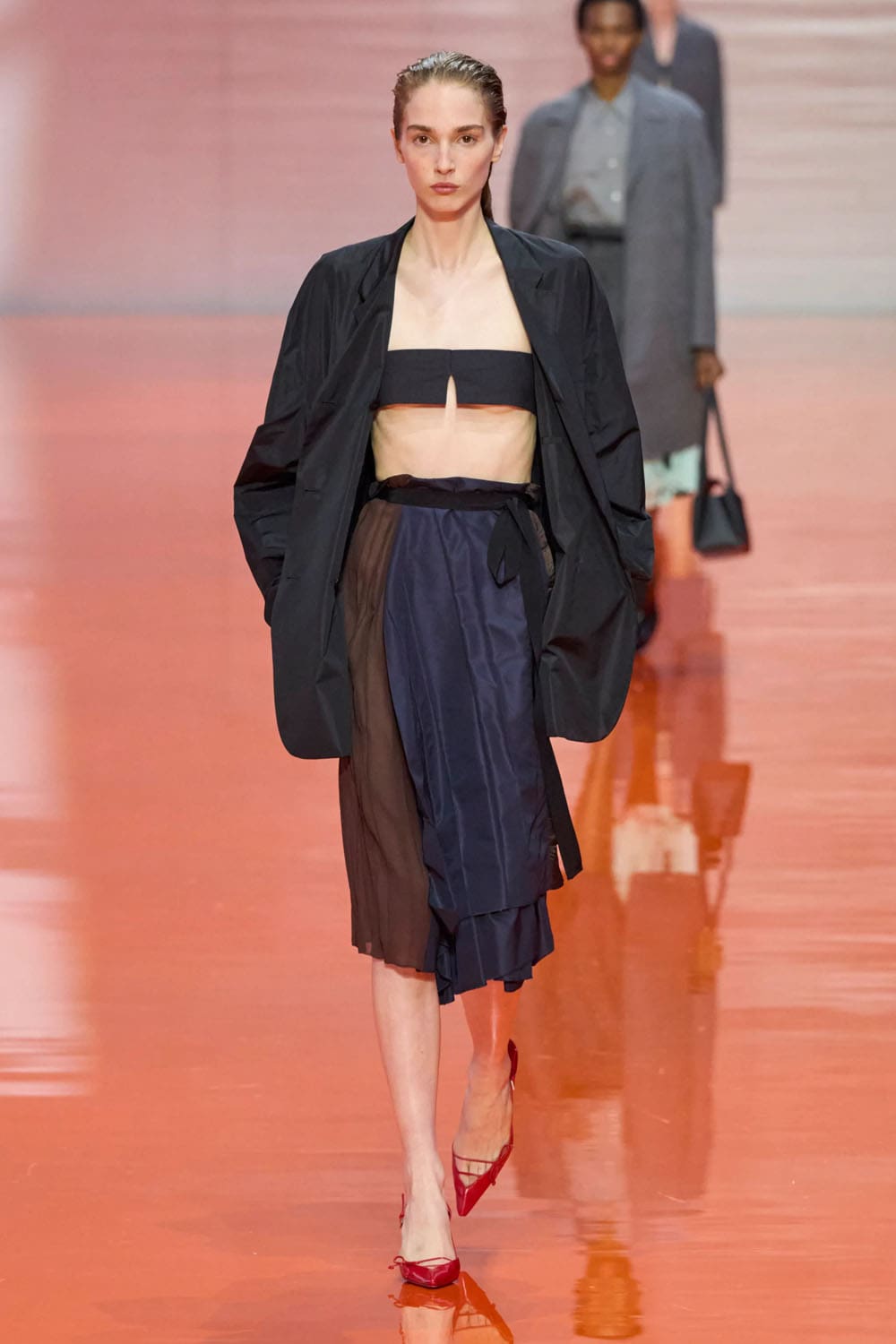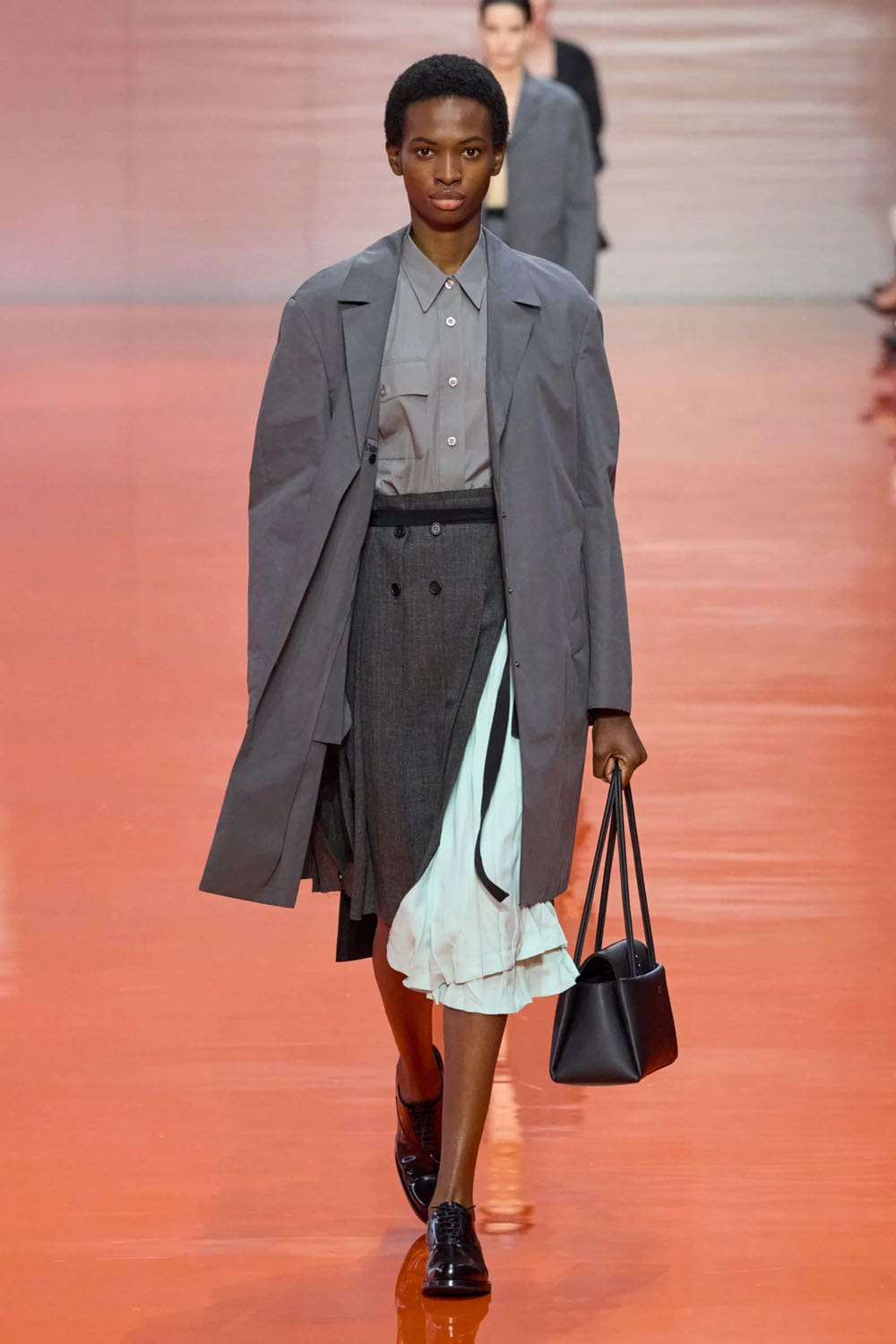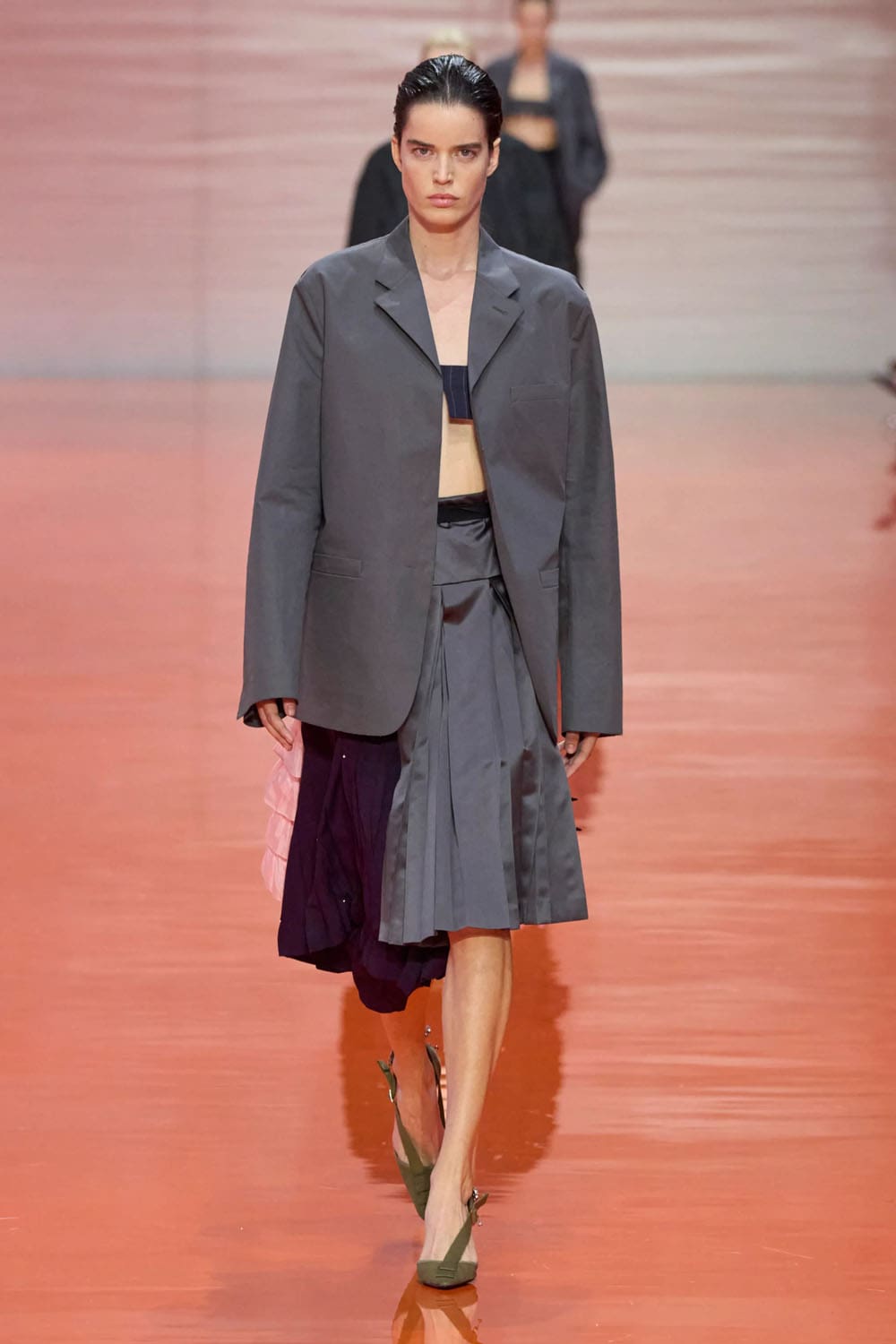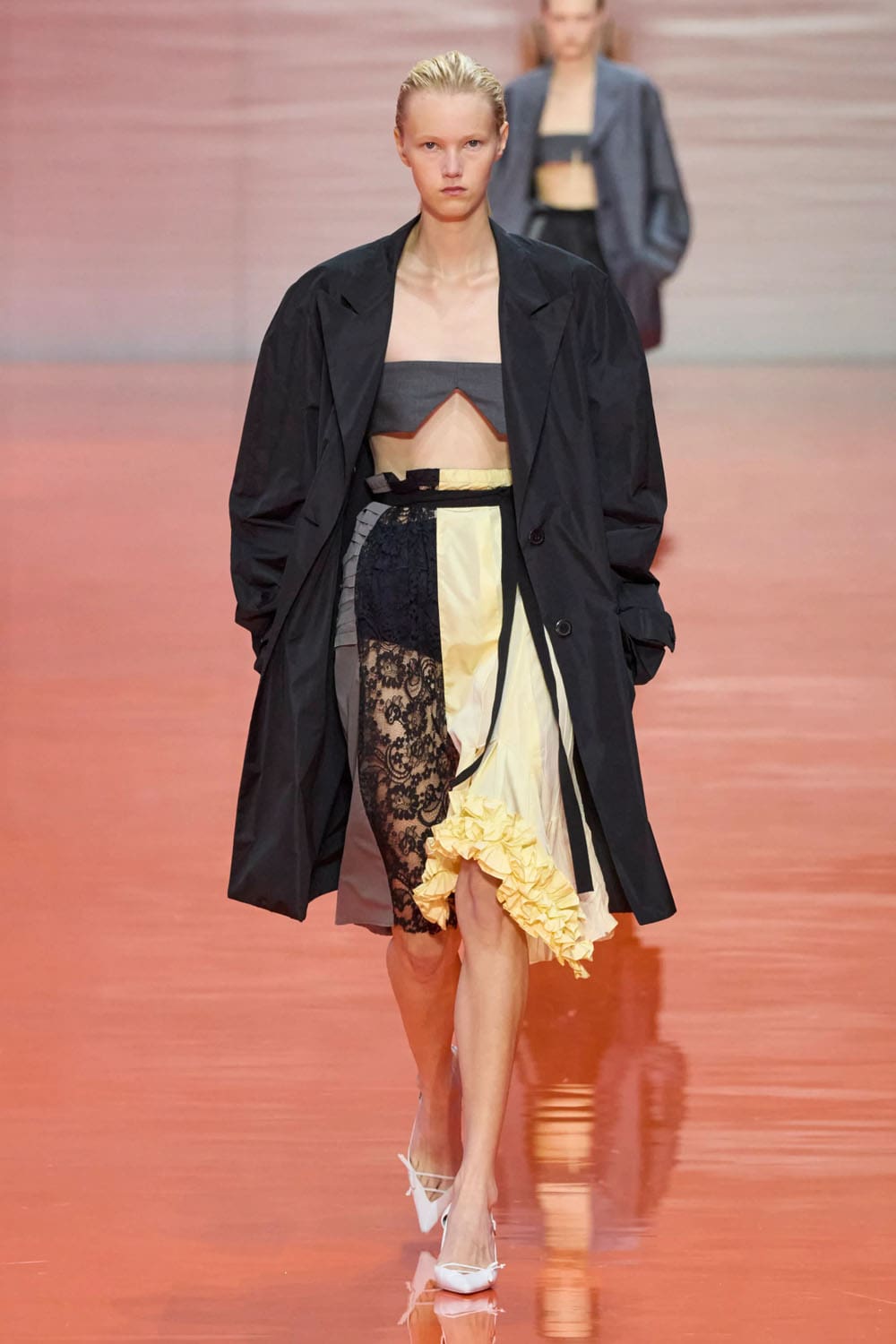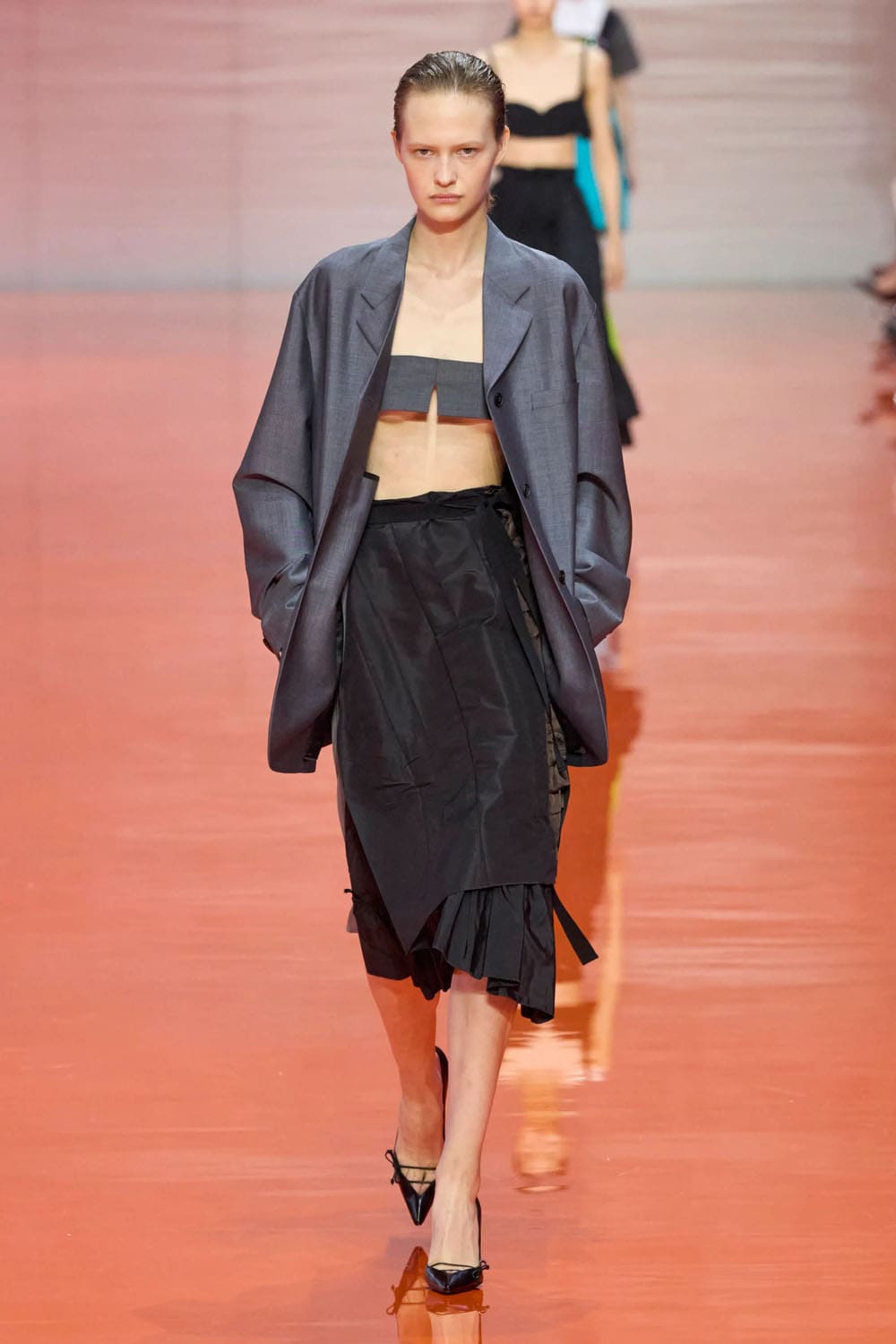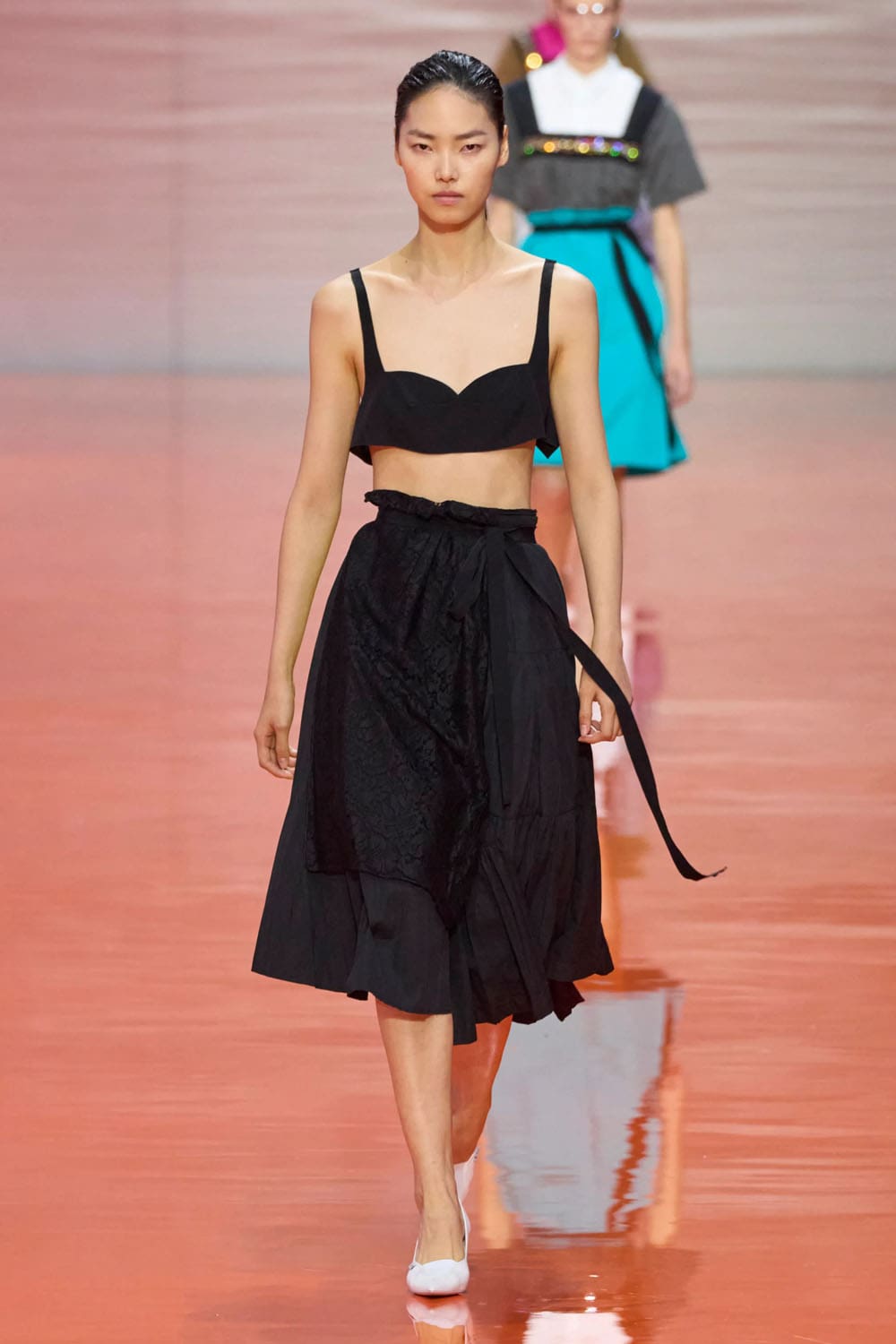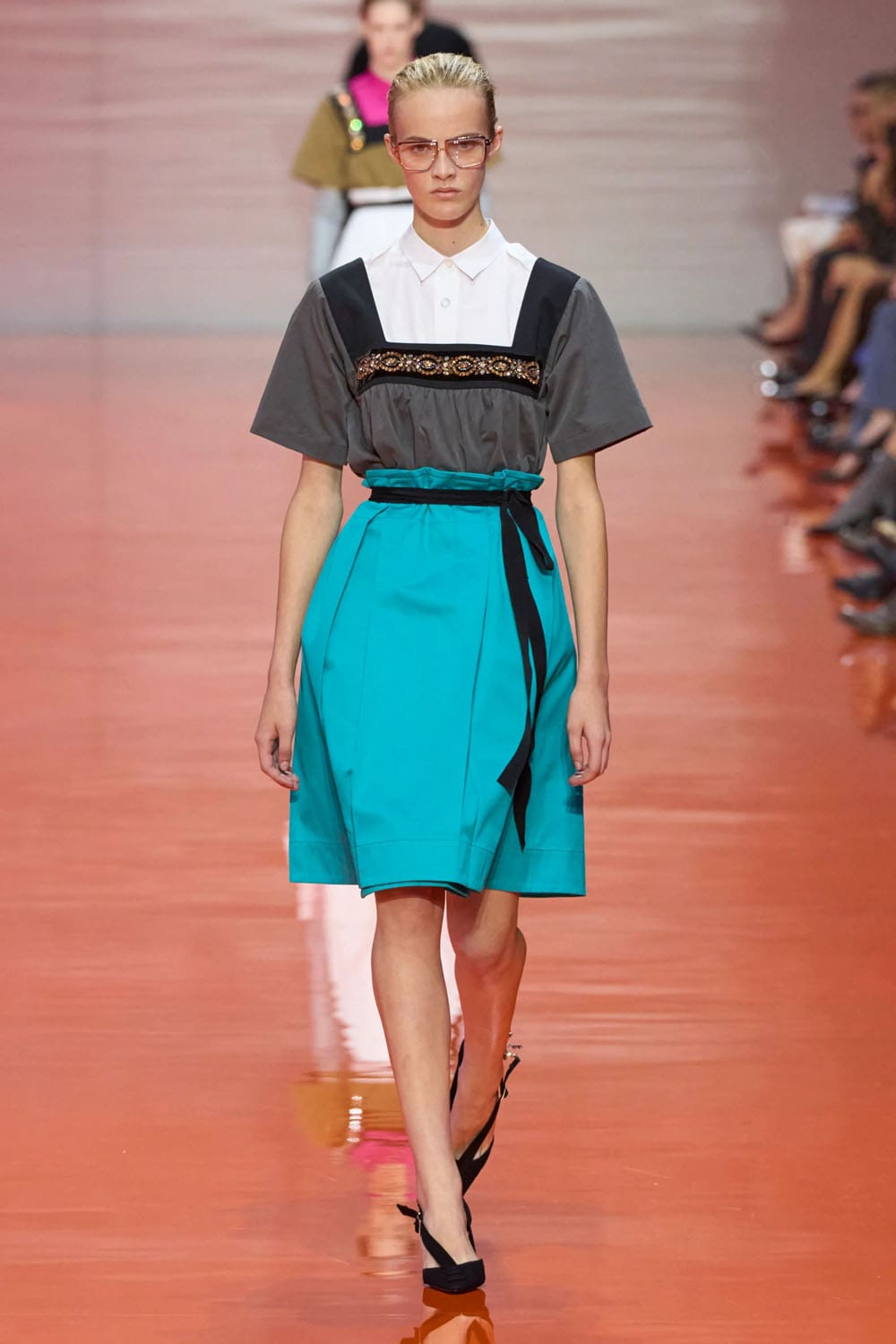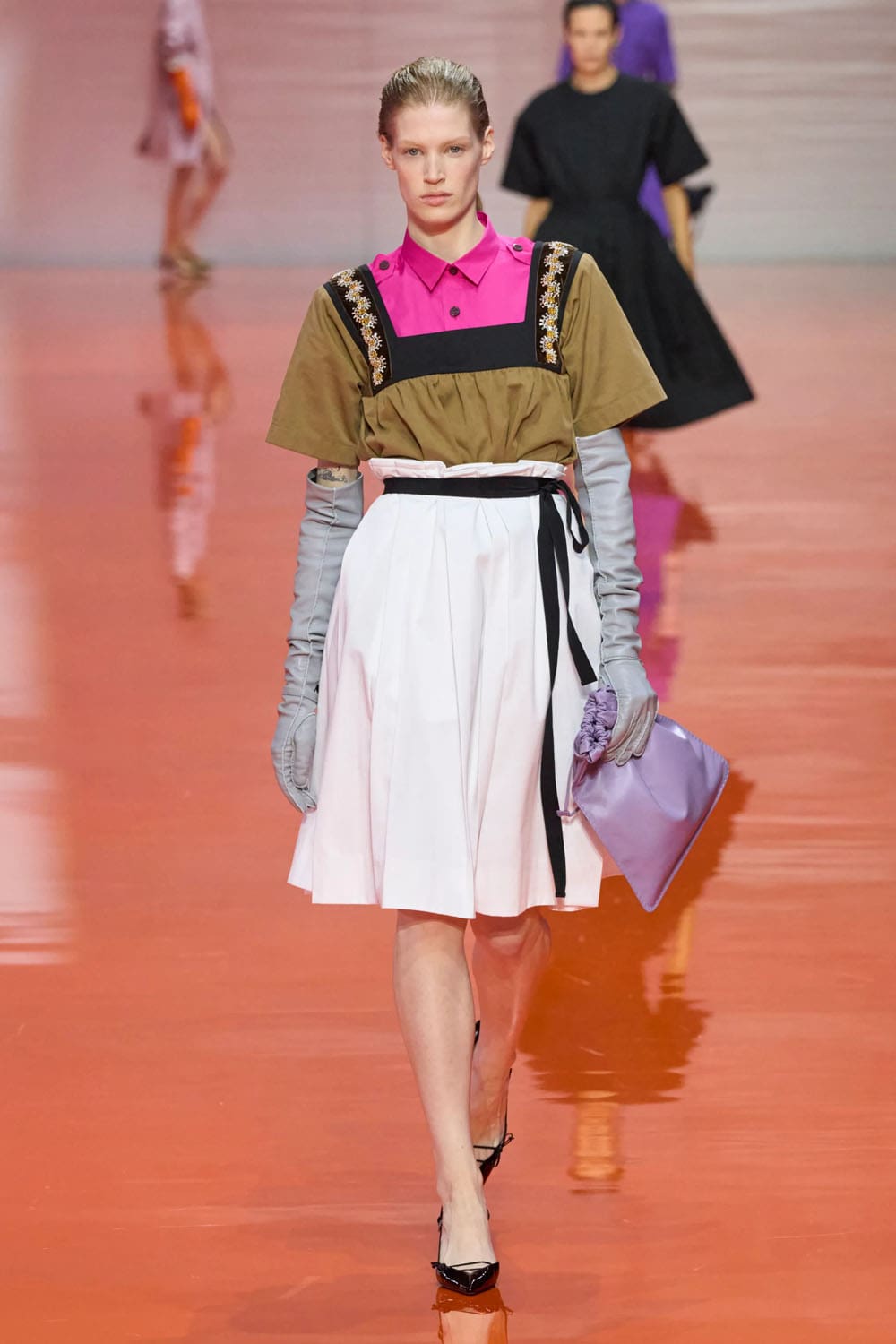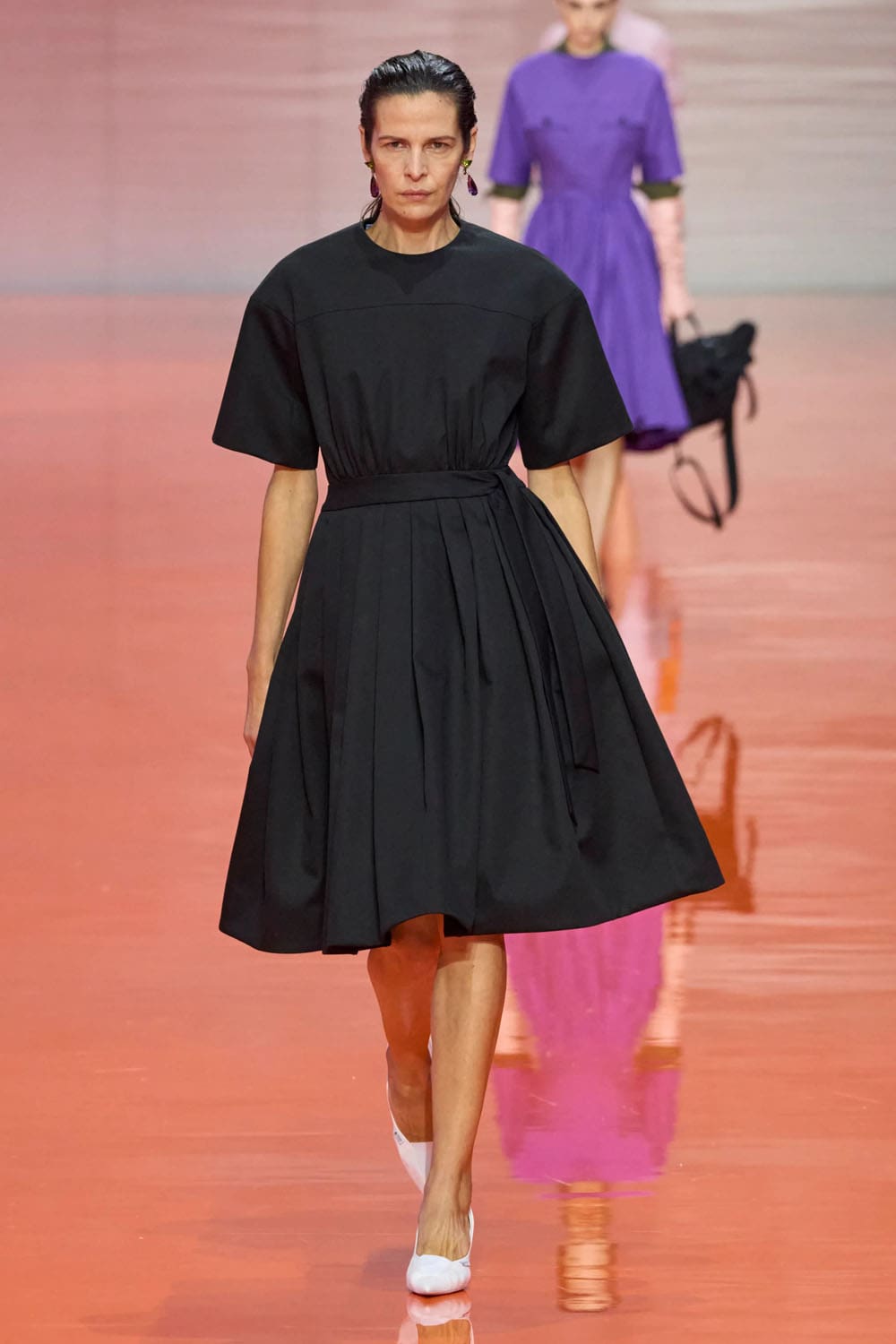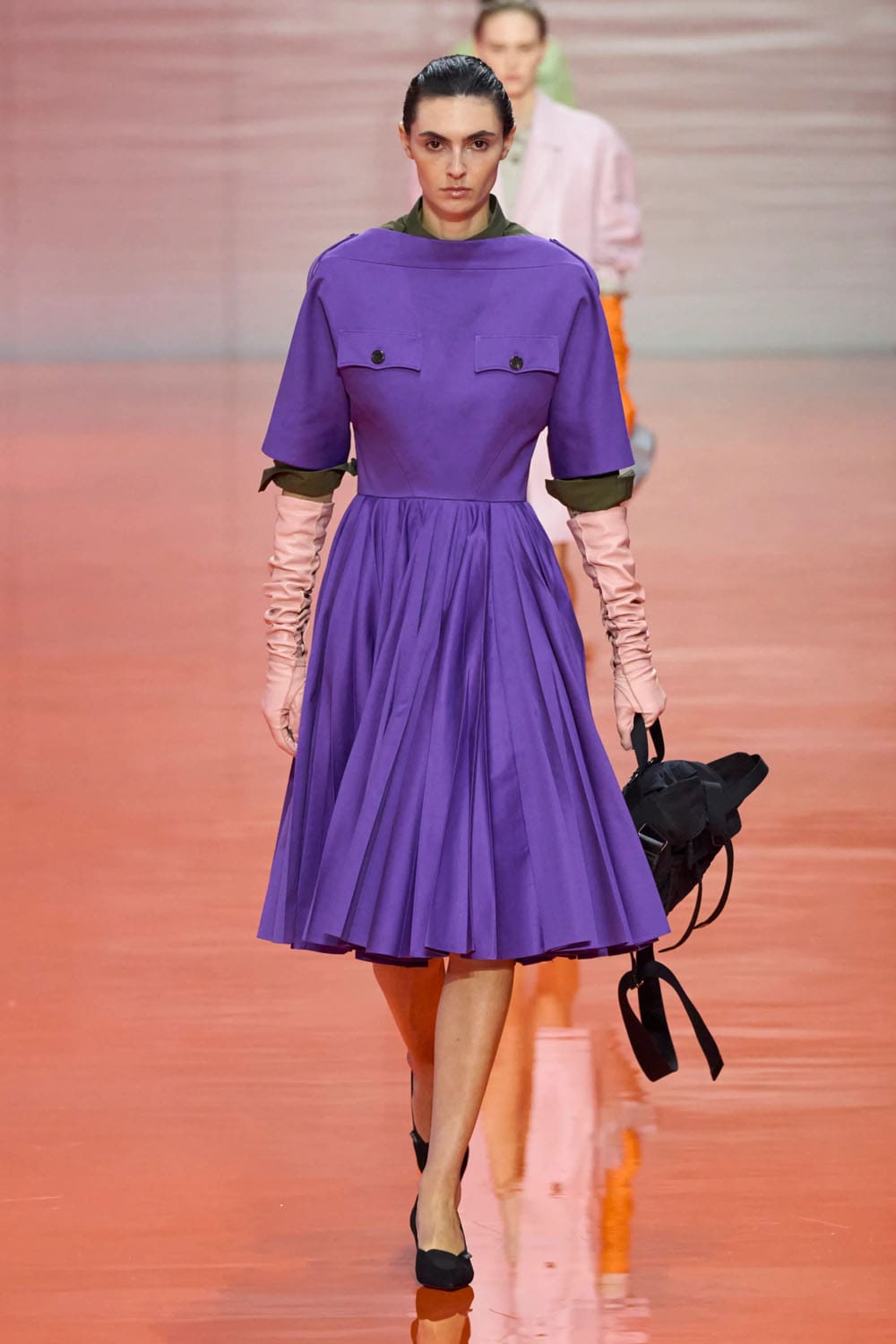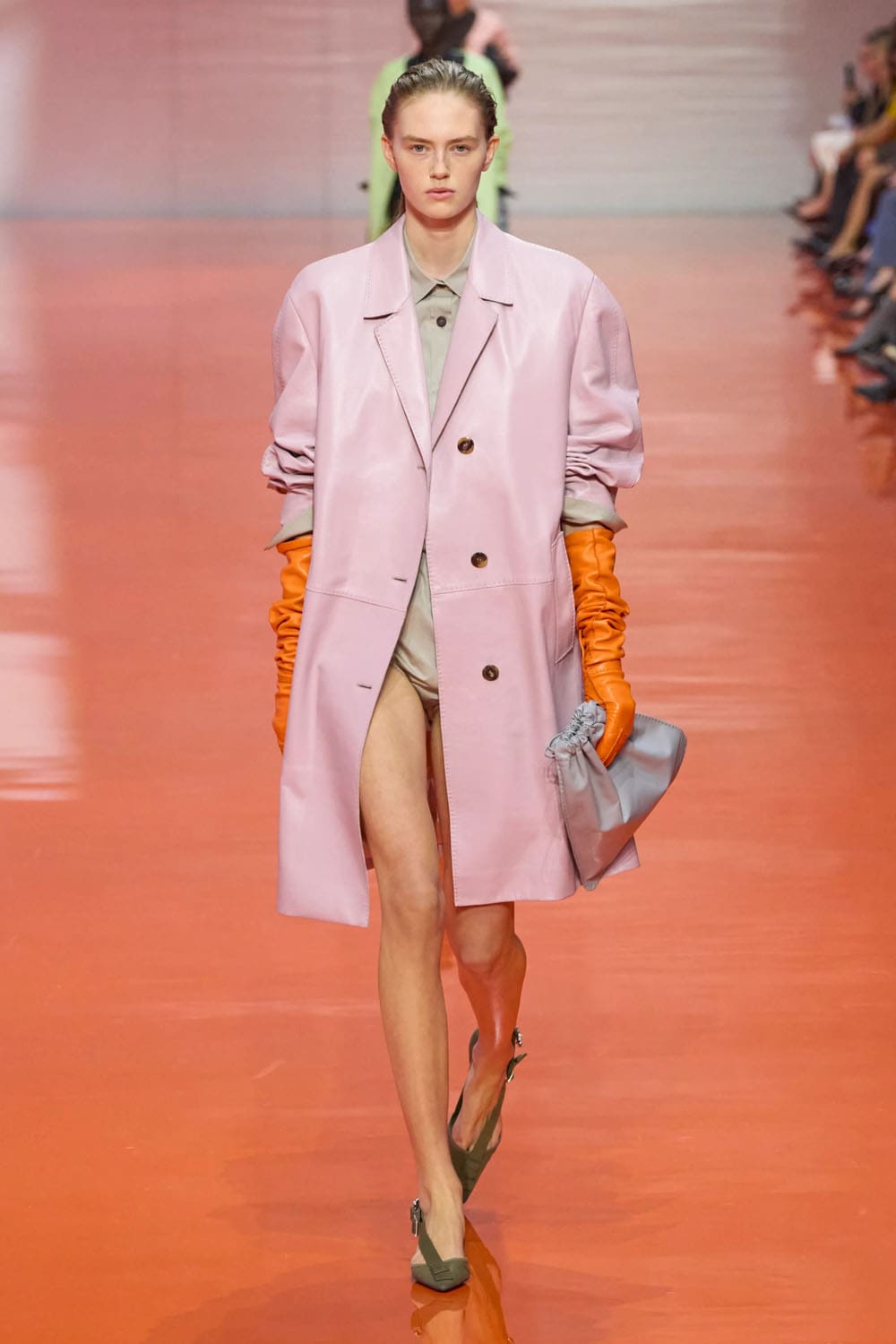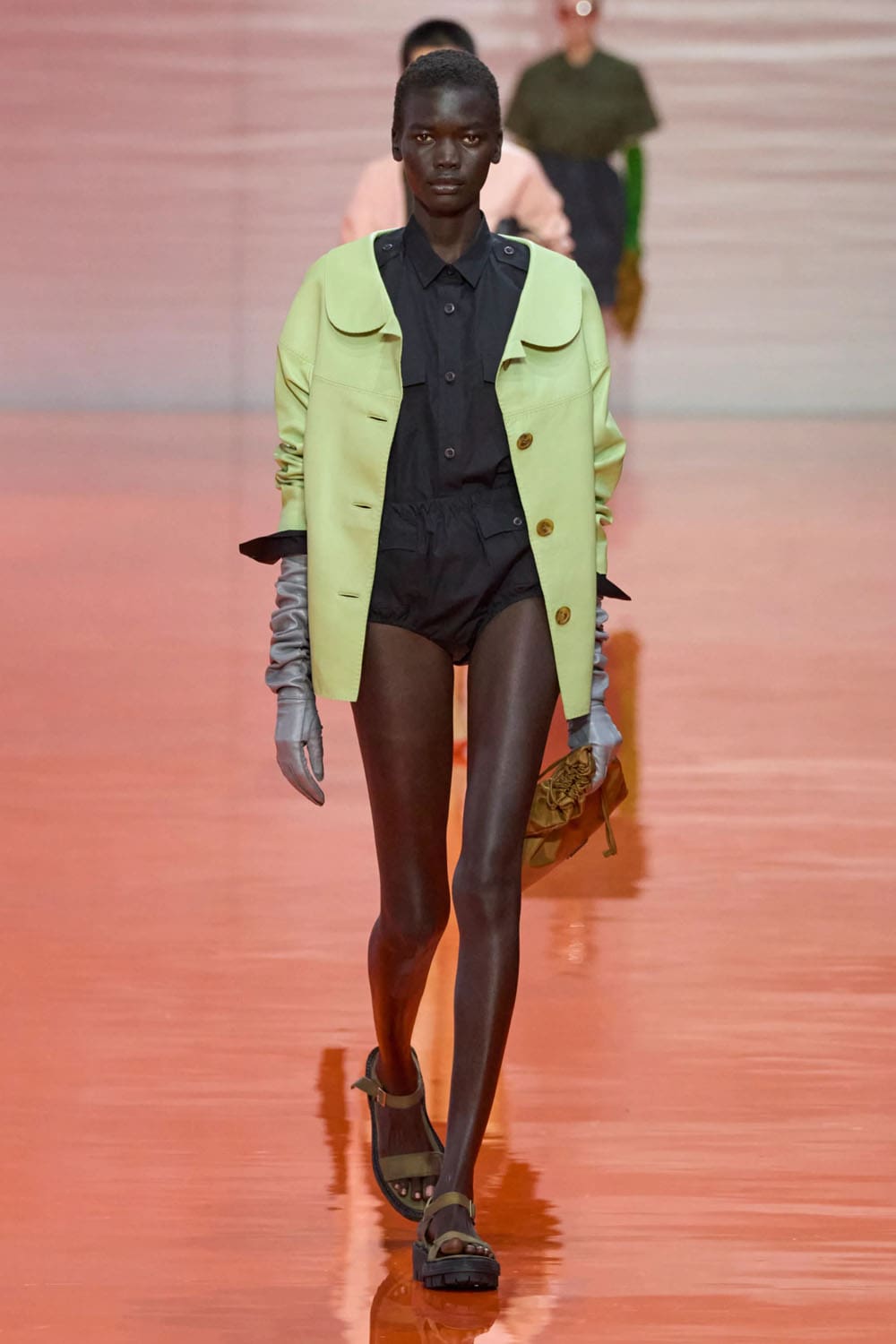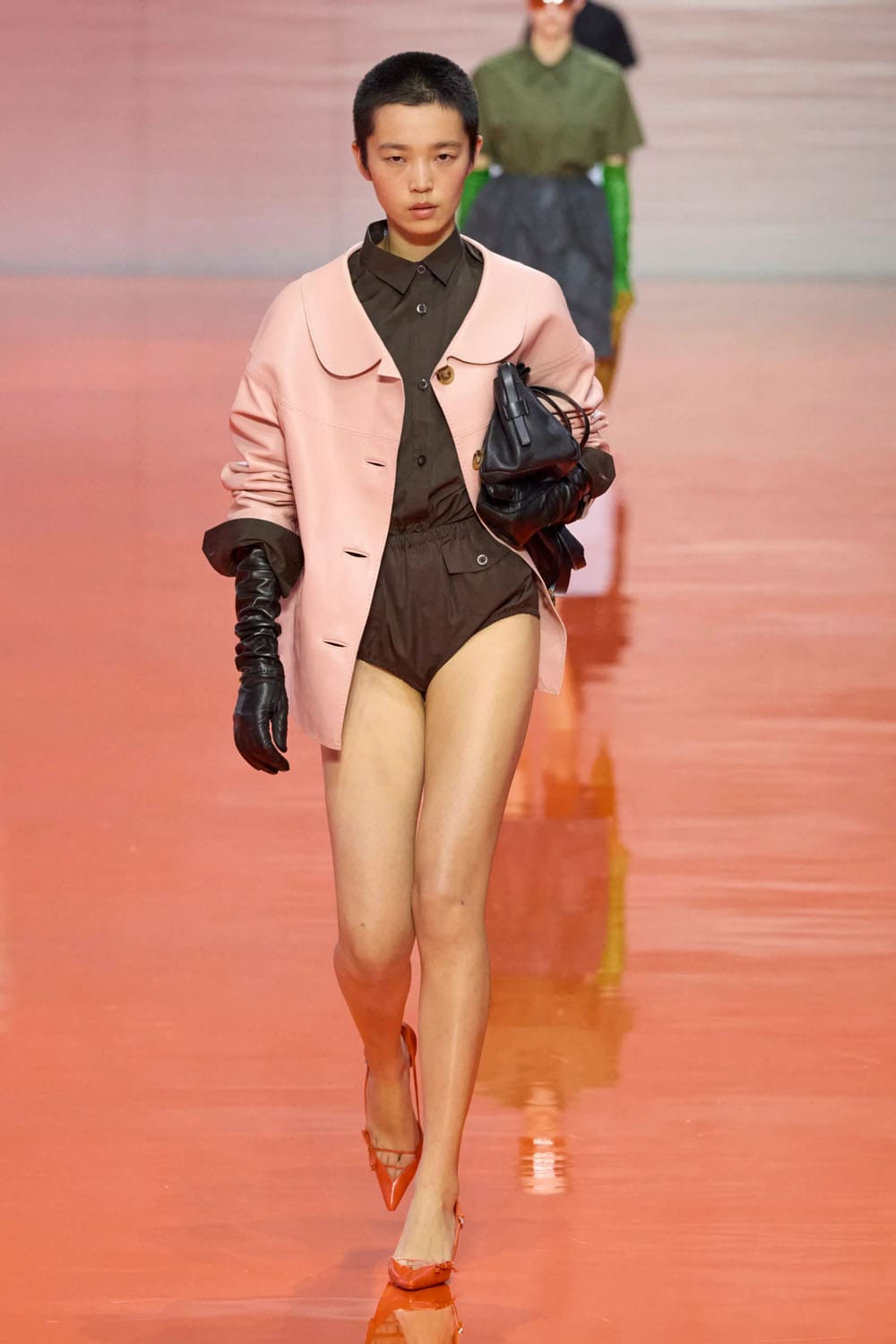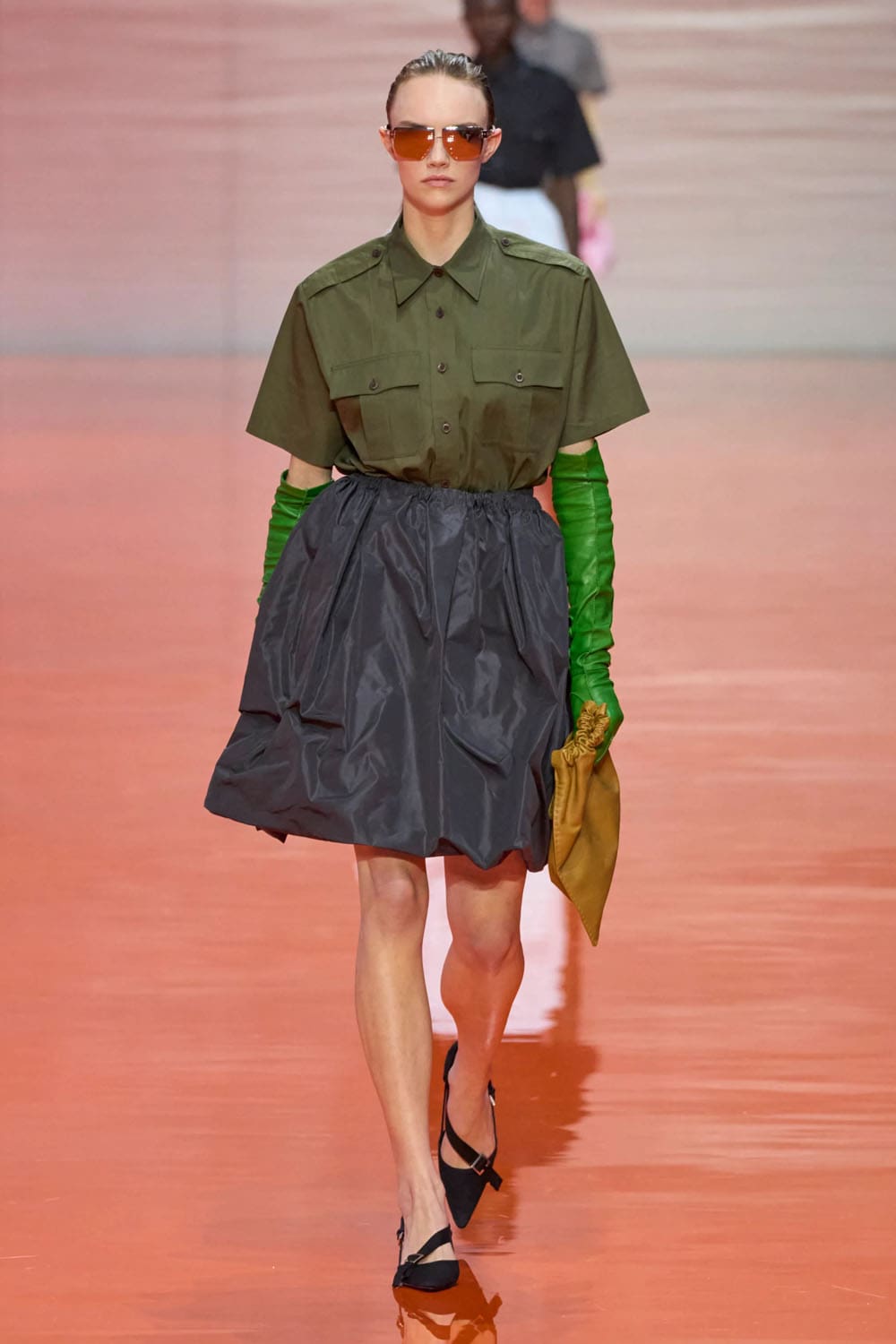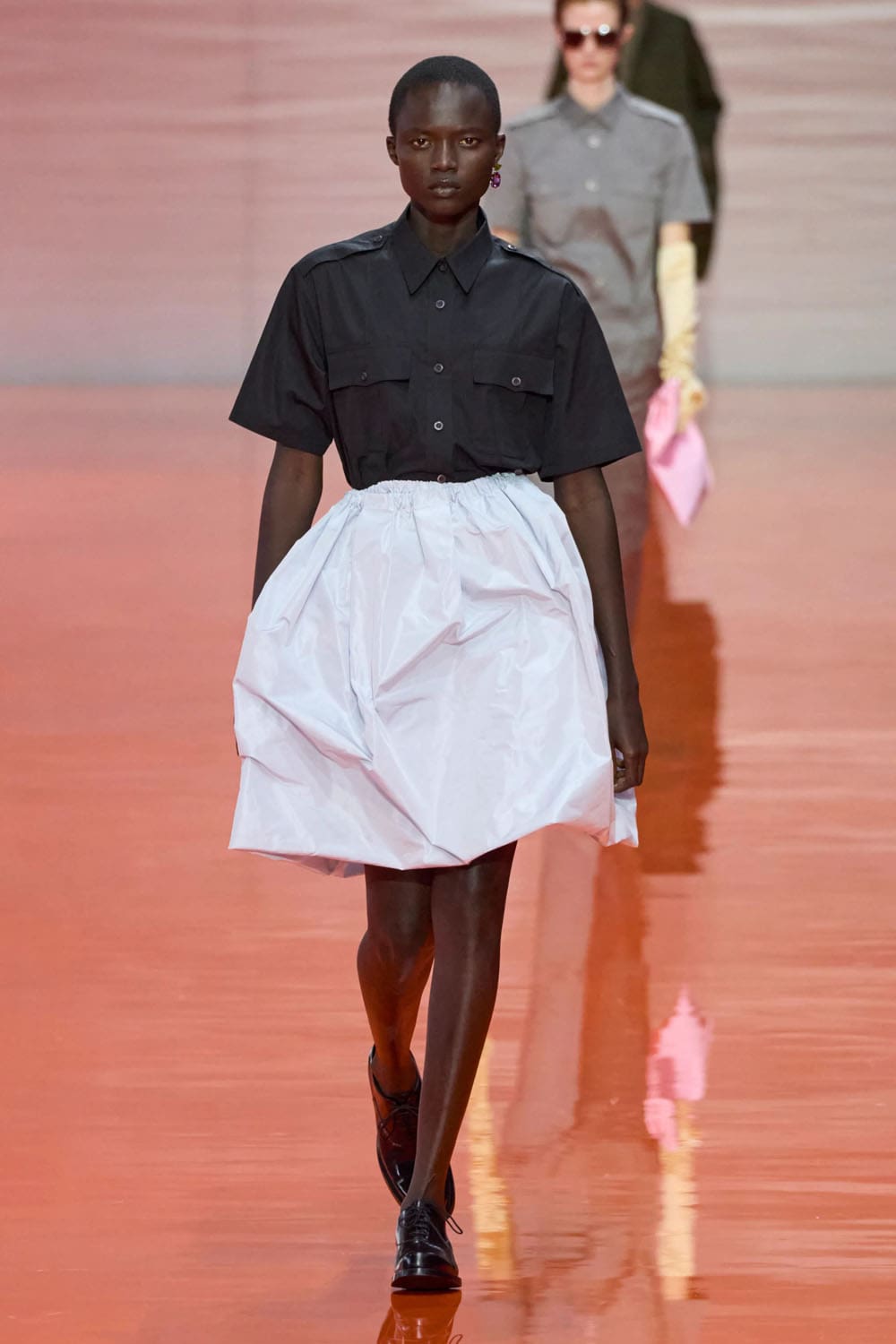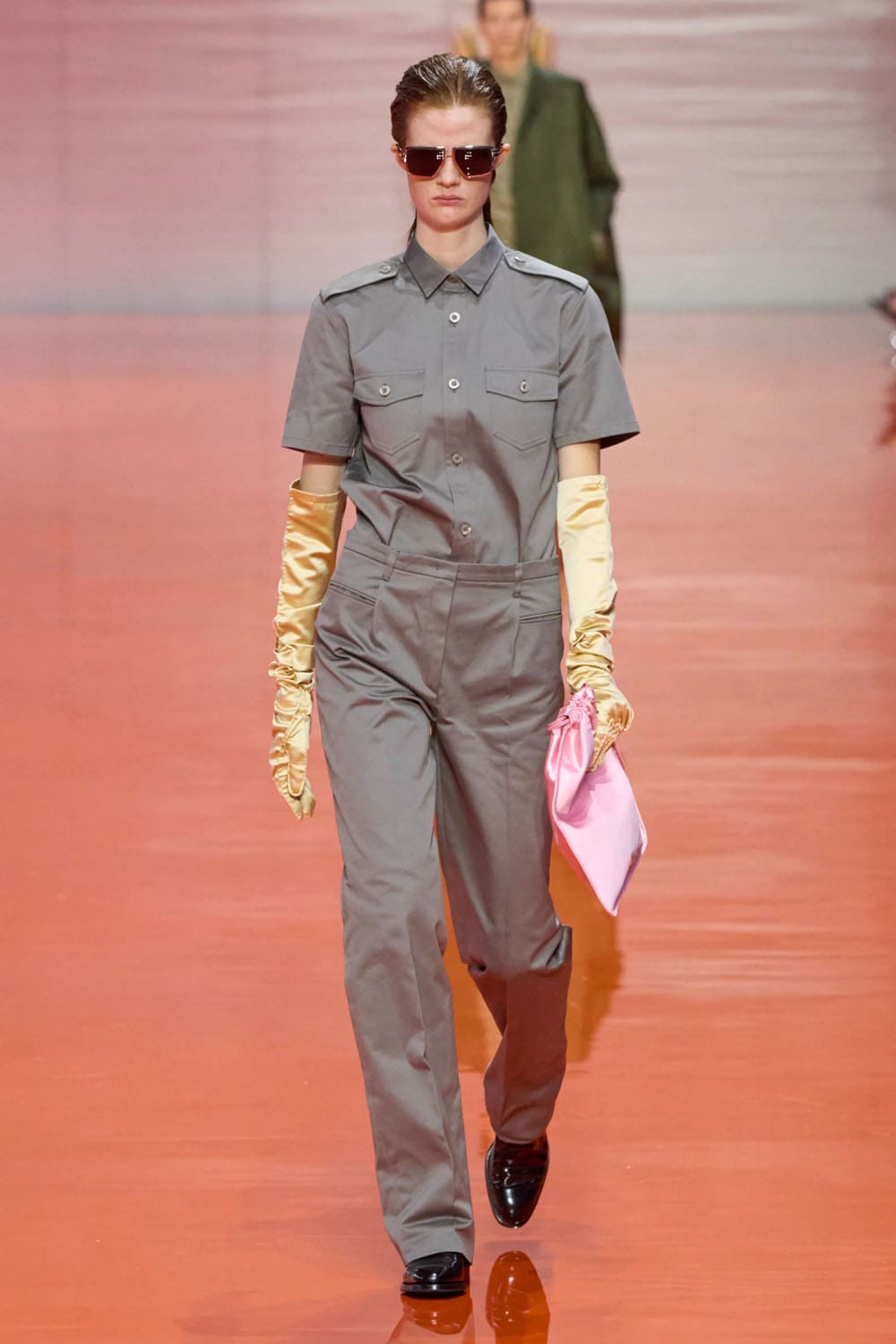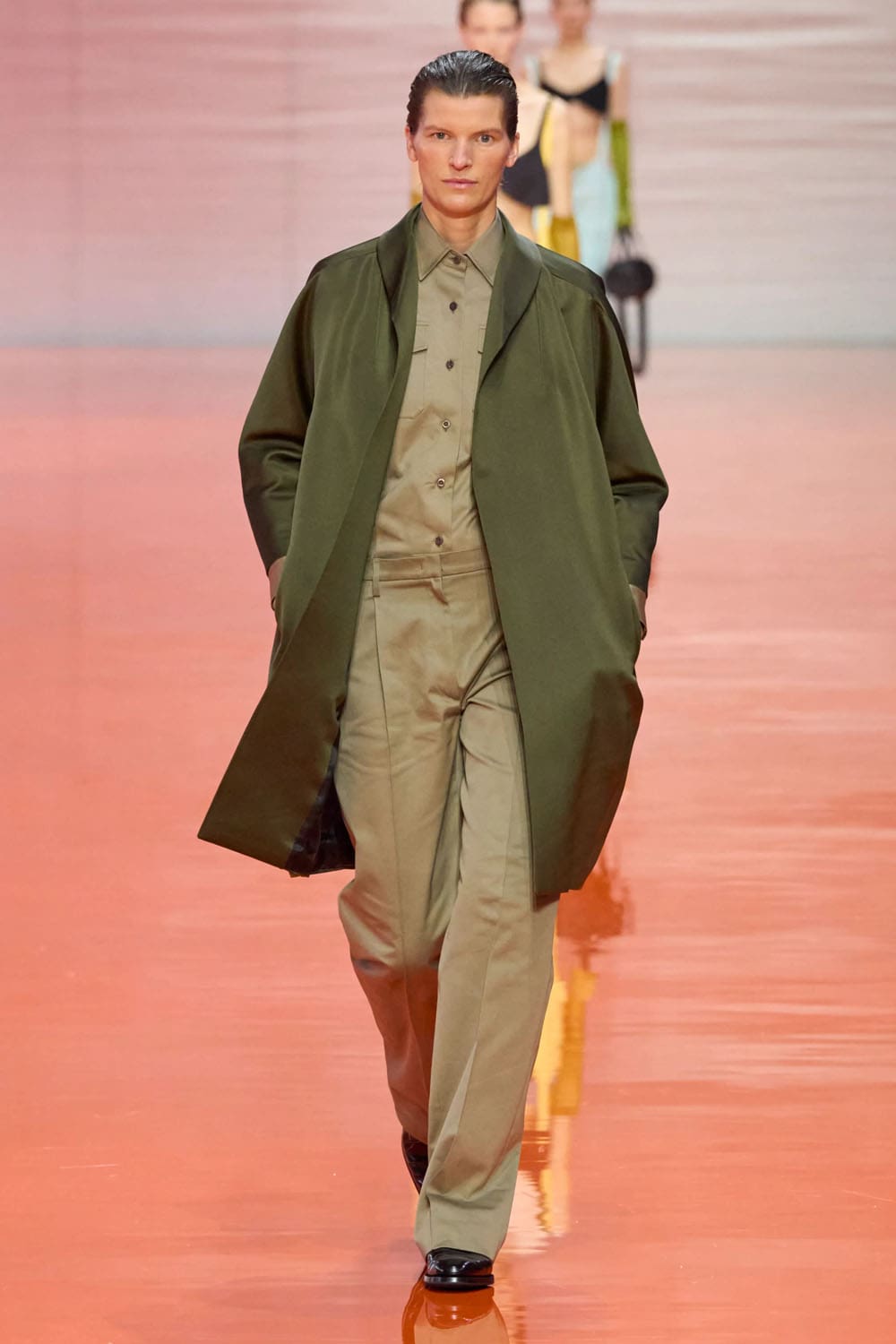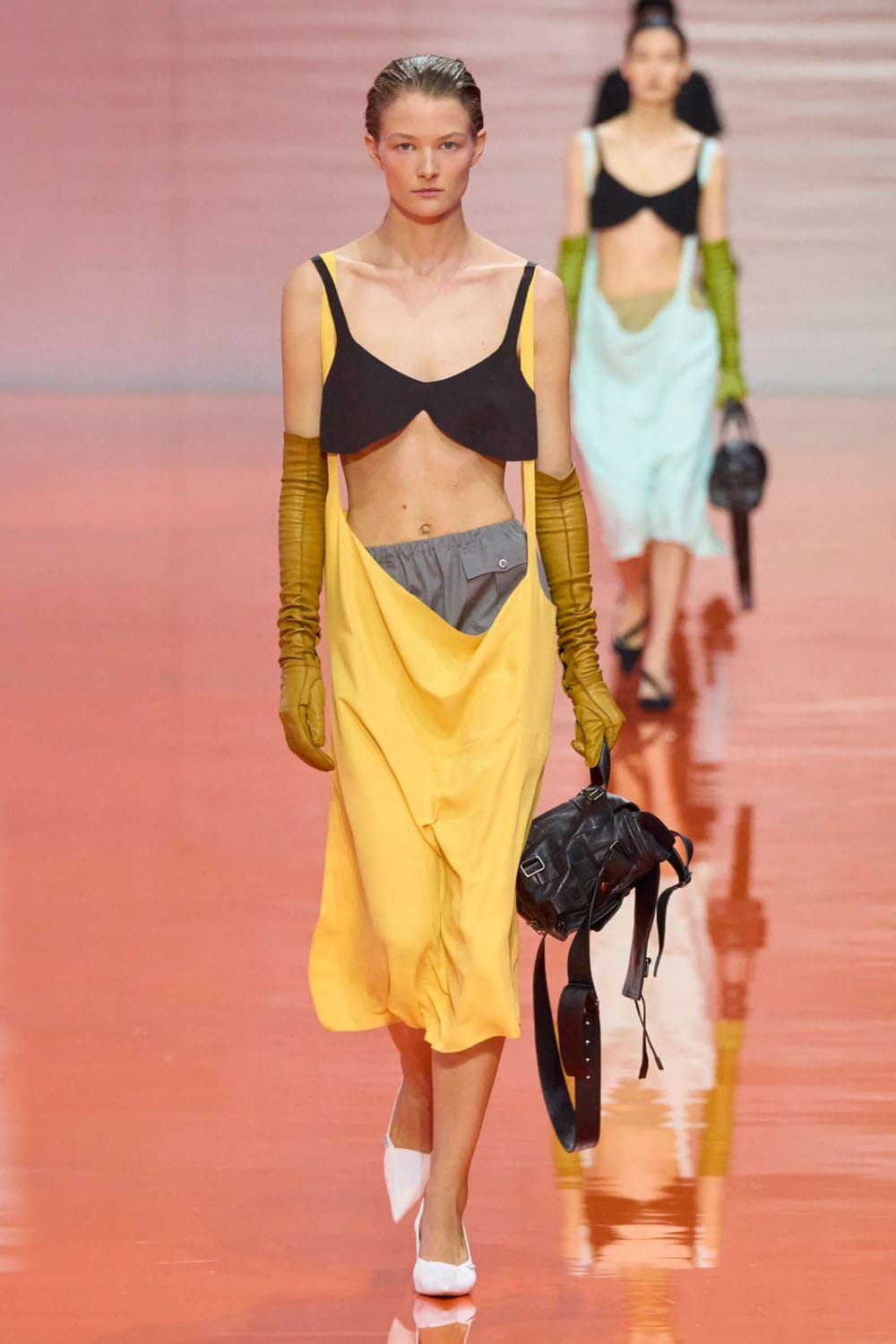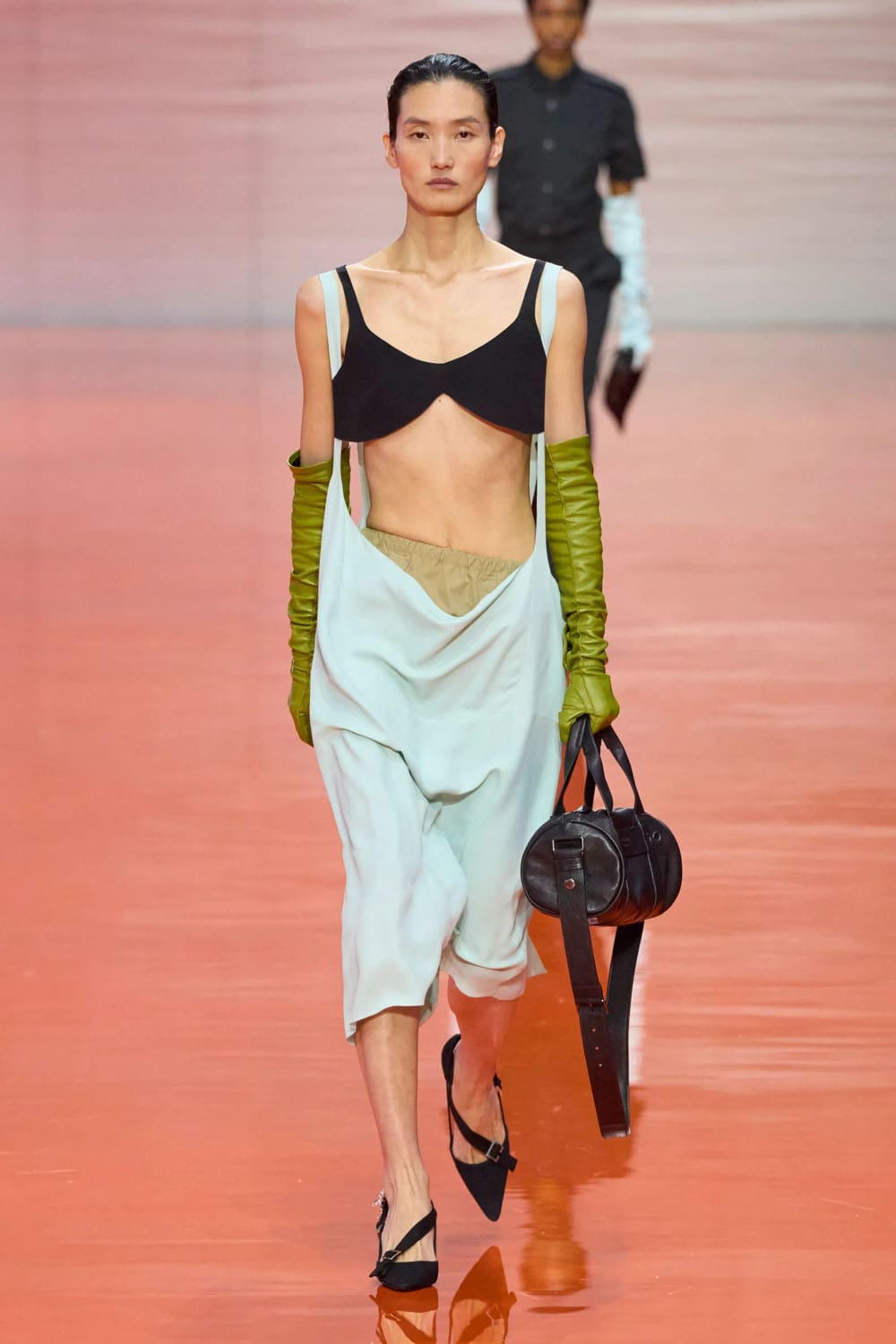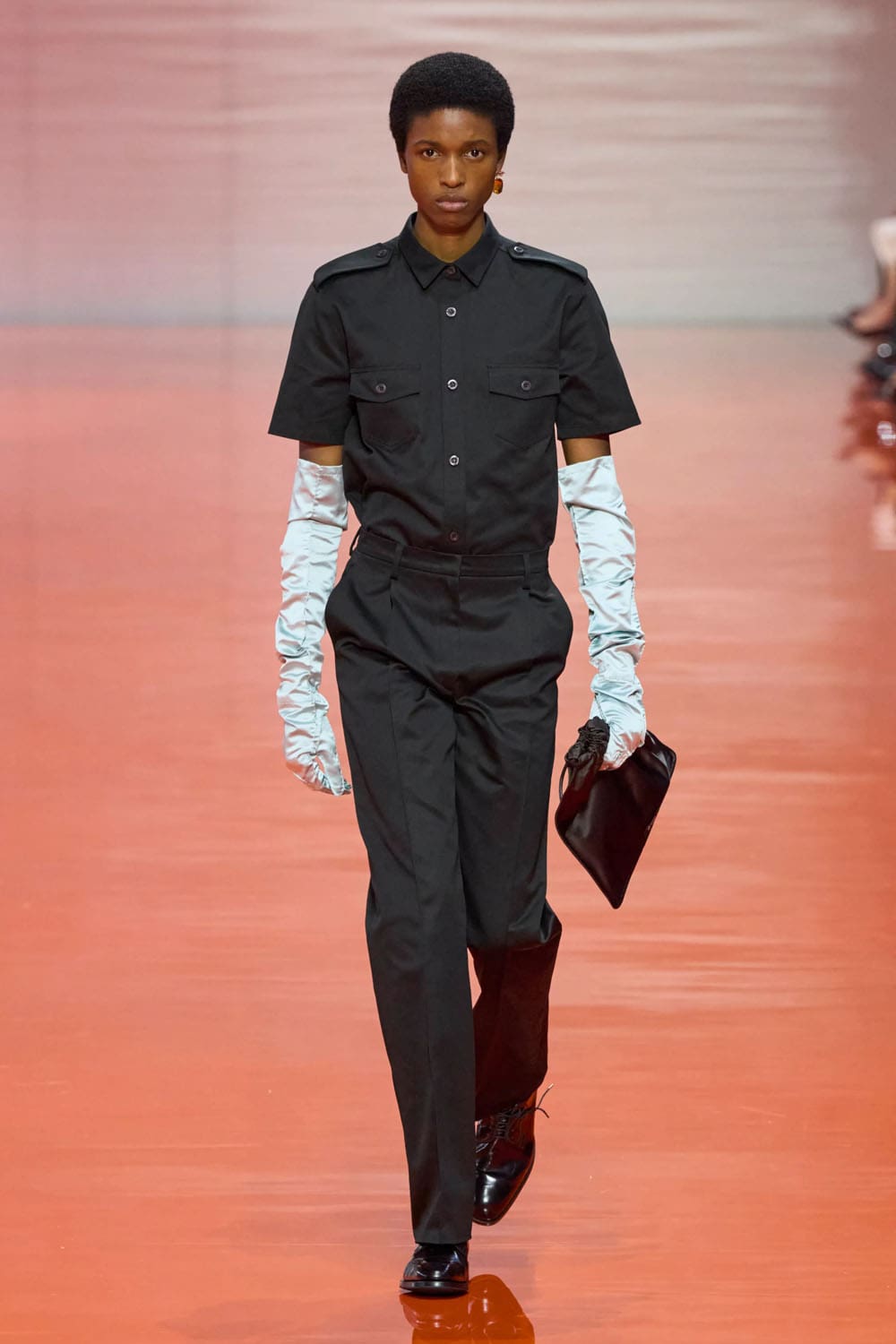Prada Spring Summer 2026 “Elegance Off-Kilter”. Story by RUNWAY MAGAZINE. Photo Courtesy: Prada.
In a world increasingly defined by noise—of news cycles, social feeds, and hyperstimulated fashion calendars—Prada chose silence. Not literal silence, of course: backstage was its usual orchestration of camera clicks and backstage hustle. But within the stripped-down concrete walls of the Fondazione, Miuccia Prada and Raf Simons offered a more deliberate form of quiet—an elegant, off-axis rebellion against overload. Their Spring Summer 2026 collection was not about retreating. It was about resisting, with grace.
We live in a moment where everything feels so hardcore, and it is not just to geopolitics or social unrest, but to the aggressive speed at which taste itself is commodified and digested. The Prada response? A rejection of clarity, a dismantling of structure, and a quiet refusal to conform—executed, as always, with precision.
Uniforms, Undone
The collection opened with military uniforms, but with none of their usual rigidity. Officer shirts and trousers appeared not as declarations of power, but as neutral canvases—blanks disrupted by crystal earrings, opera gloves, and ladylike handbags. These weren’t ironic juxtapositions. They were signals of reappropriation. Simons, referencing his father’s career as a night watchman, infused the collection with personal associations. What for some may suggest order and conformity, for others suggests endurance and quiet dignity.
Skirts That Float, Bras That Don’t
Skirts—arguably Prada’s favorite terrain—were the collection’s most expressive medium. There were knee-length ruffled patchworks, asymmetrically gathered and frayed, that gave the impression of motion even while still. Others were suspended from slender straps, revealing high-waisted bloomer shorts and bare midriffs below whisper-thin, bra-like tops that made no attempt at containment. Support was irrelevant—suggestion replaced structure.
This wasn’t about sensuality in the typical sense. It was about presence. The non-bras didn’t cling, they hovered. They framed the body rather than sculpted it. And this distance—from the clothes, from expectations—was the core of Prada’s proposition.
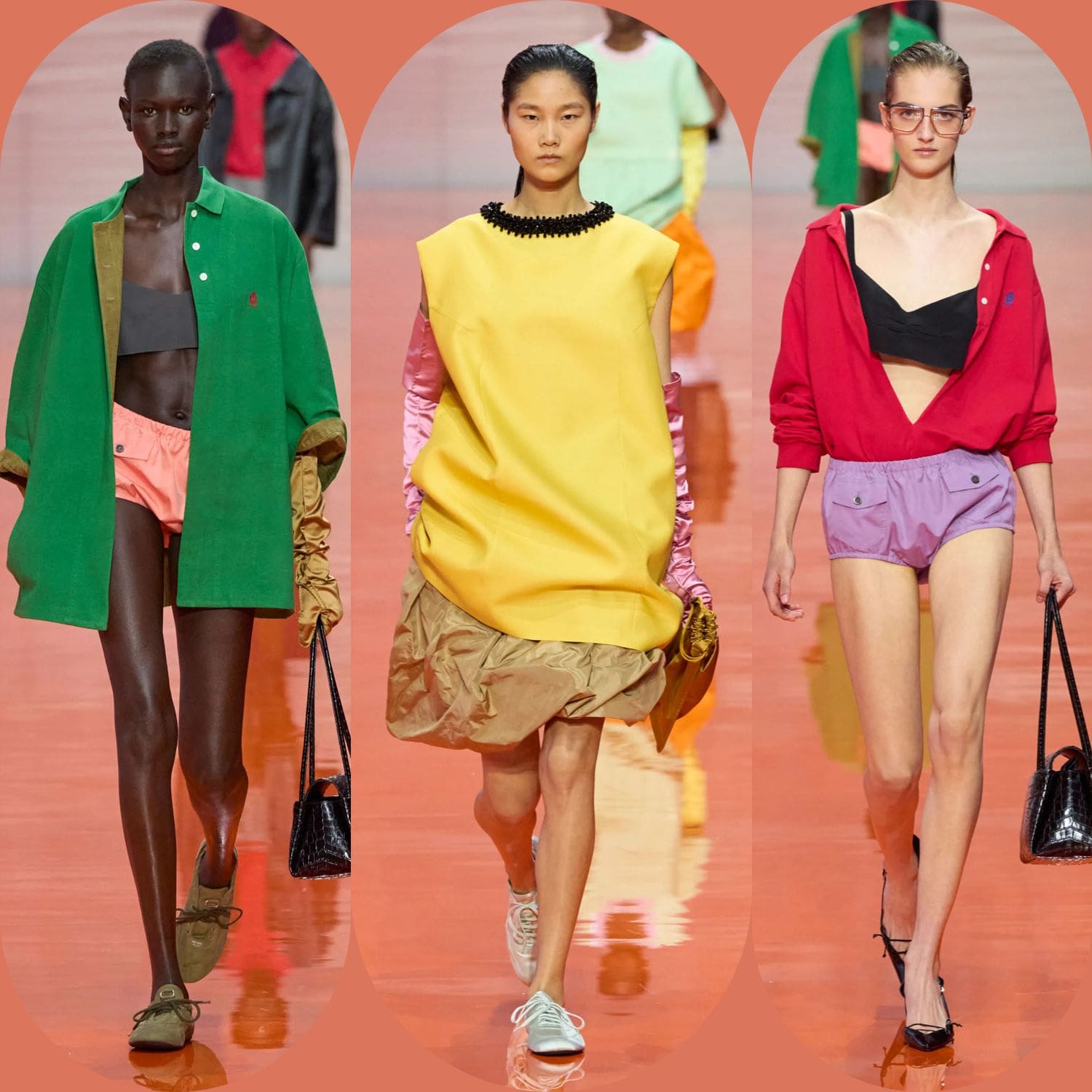
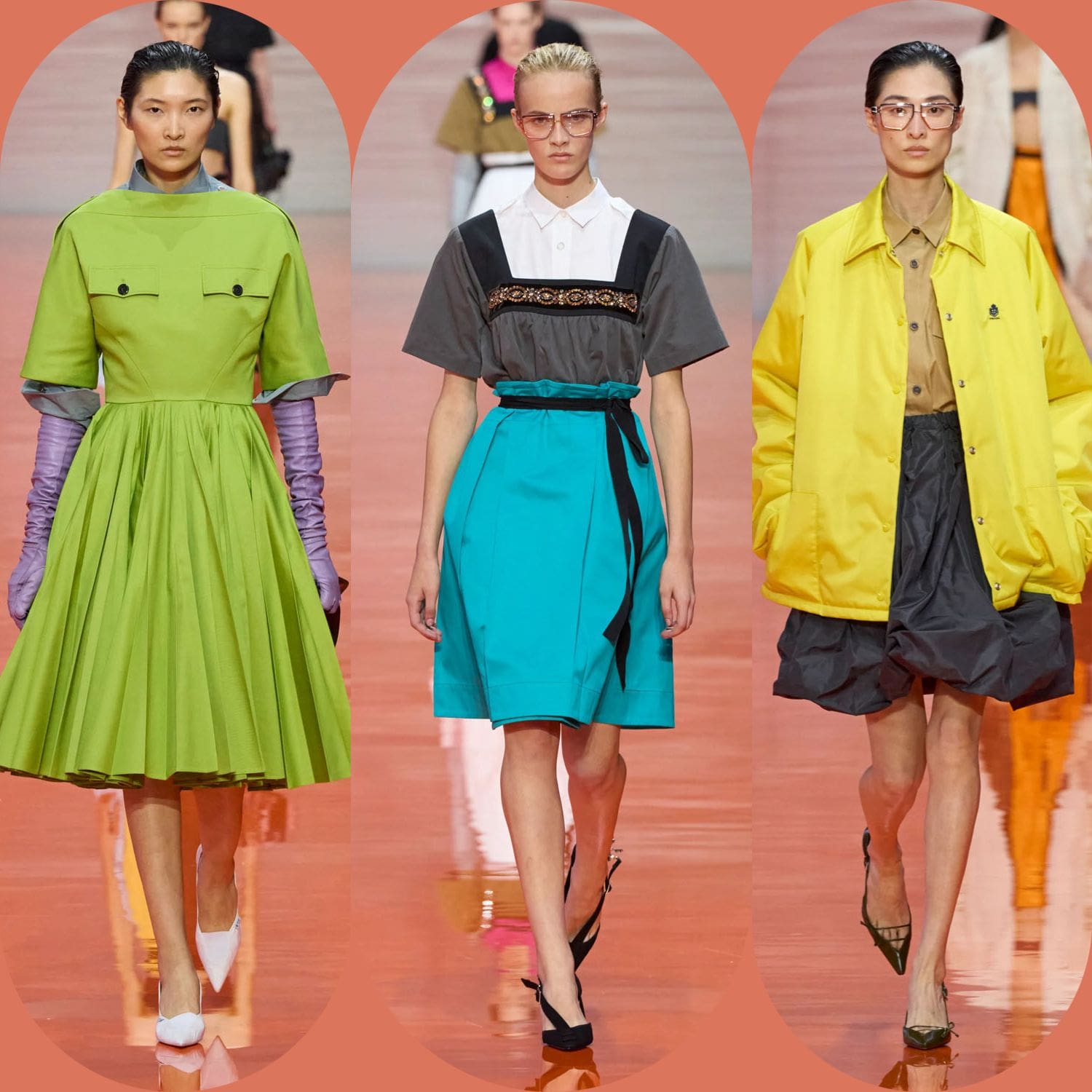
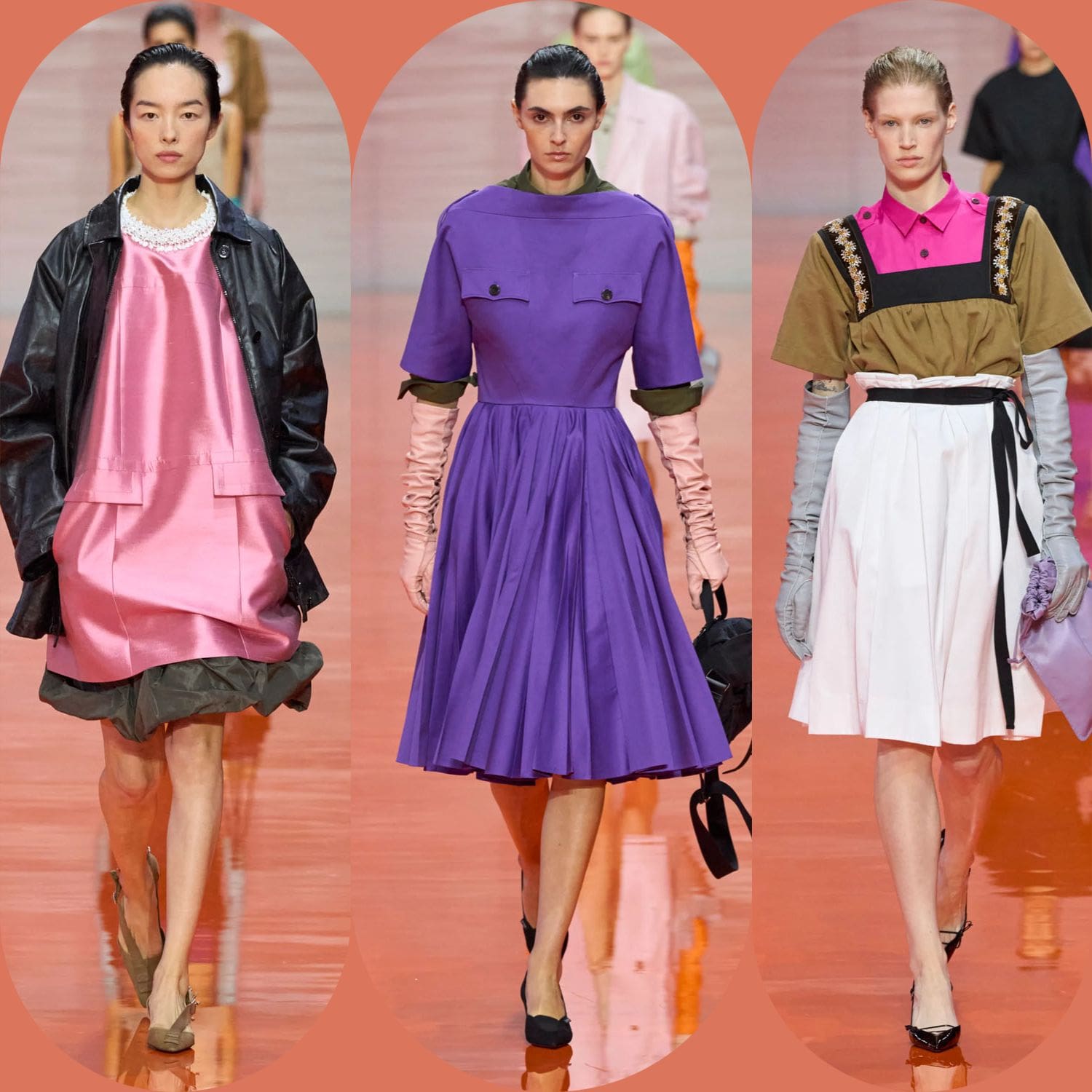
Sculpting the Anti-Sculptural
Simons and Prada made it clear: they are moving away from sculptural fashion—that is, from fashion that imposes itself on the body. Their dirndl dresses, bejeweled and modest at first glance, weren’t nostalgic; they were intellectually mischievous, calling back to Prada’s early provocations, when she famously turned bourgeois dress codes on their head.
Even where volume appeared—puffy taffeta, exaggerated sleeves, bubble shapes—it never felt heavy. The volume was a gesture, not a command.
The Prada Lag
The irony of this season is that everyone seems to be referencing Prada—and yet Prada is already somewhere else. The algorithms may be catching up, but Miuccia Prada and Raf Simons remain unbothered. Their creative language is not built on trend, but on tension: between form and looseness, between severity and fragility.
Their freedom lies in their refusal to explain. And perhaps that is why, no matter how crowded the fashion conversation becomes, Prada always feels several steps ahead—a brand that never shouts, but always speaks louder.
Where the runway begins with history—and ends in innovation.
See All Looks Prada Spring Summer 2026
